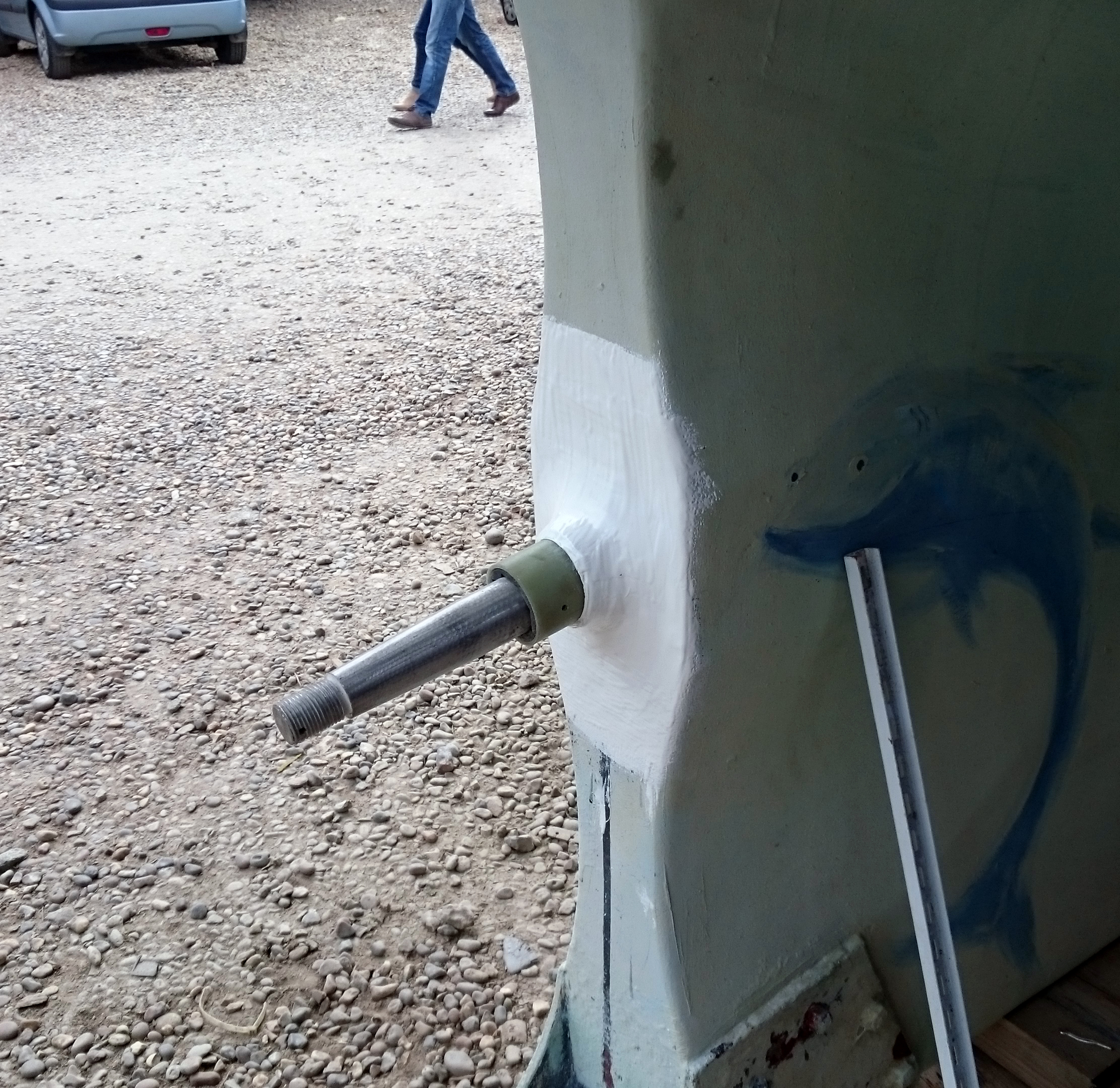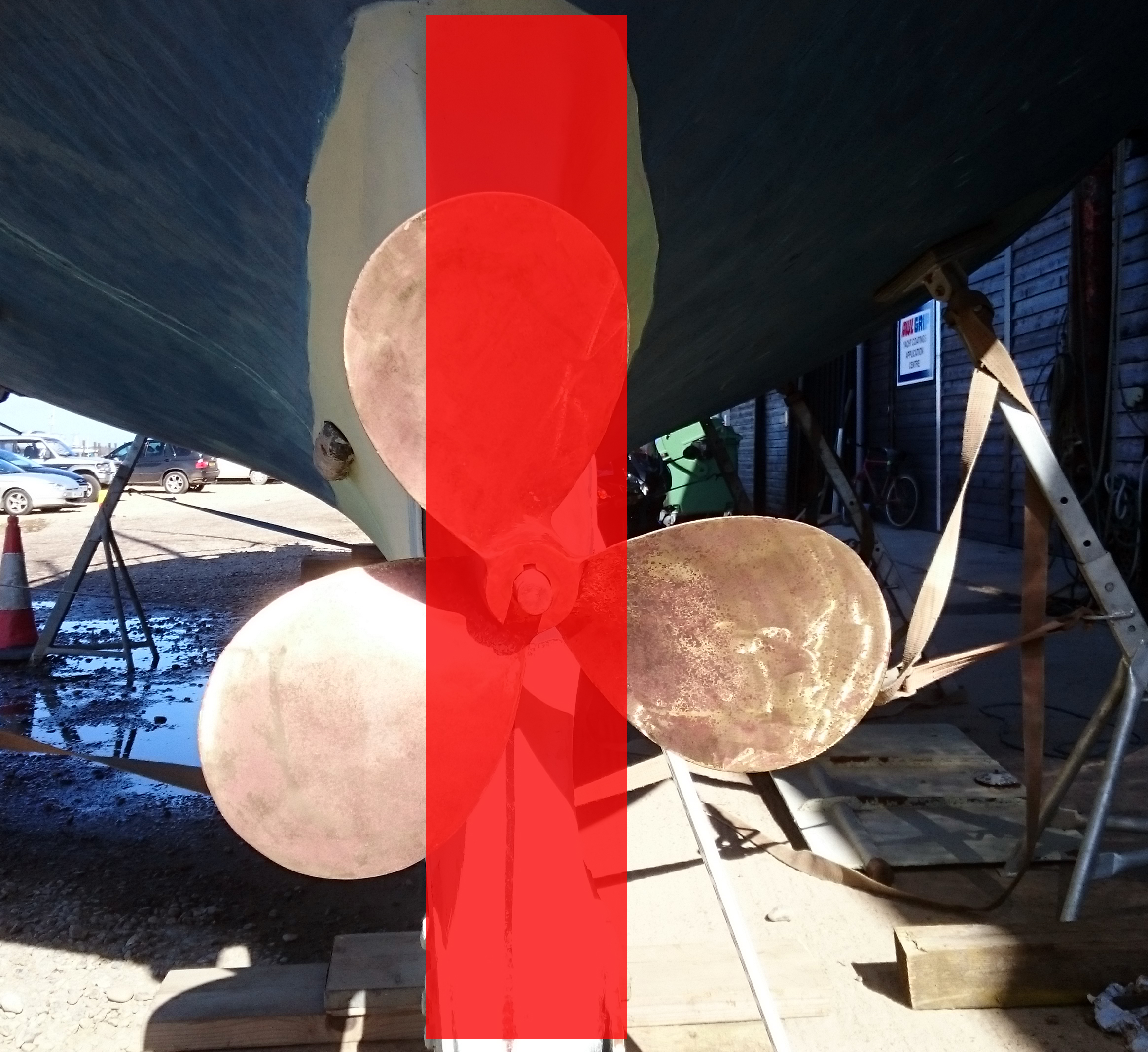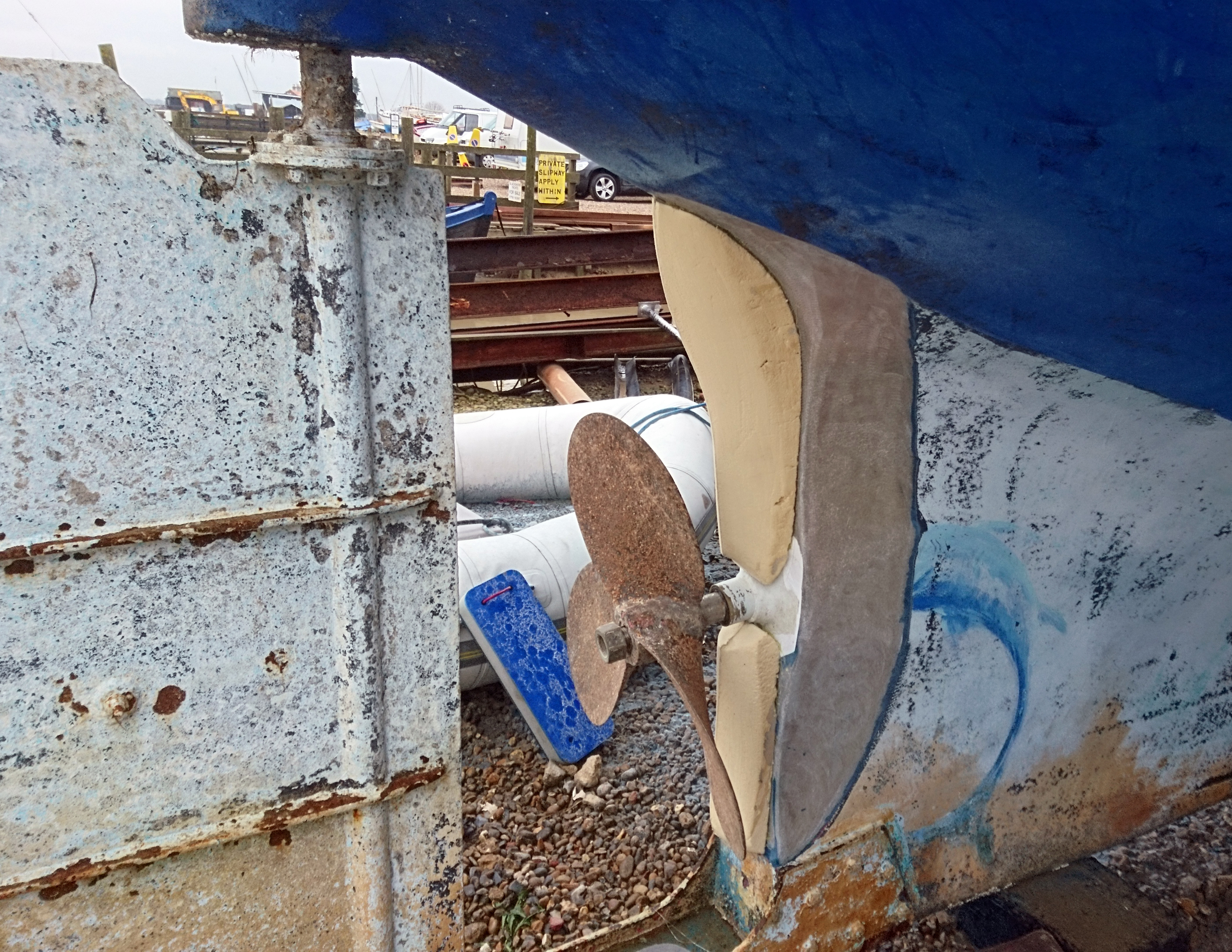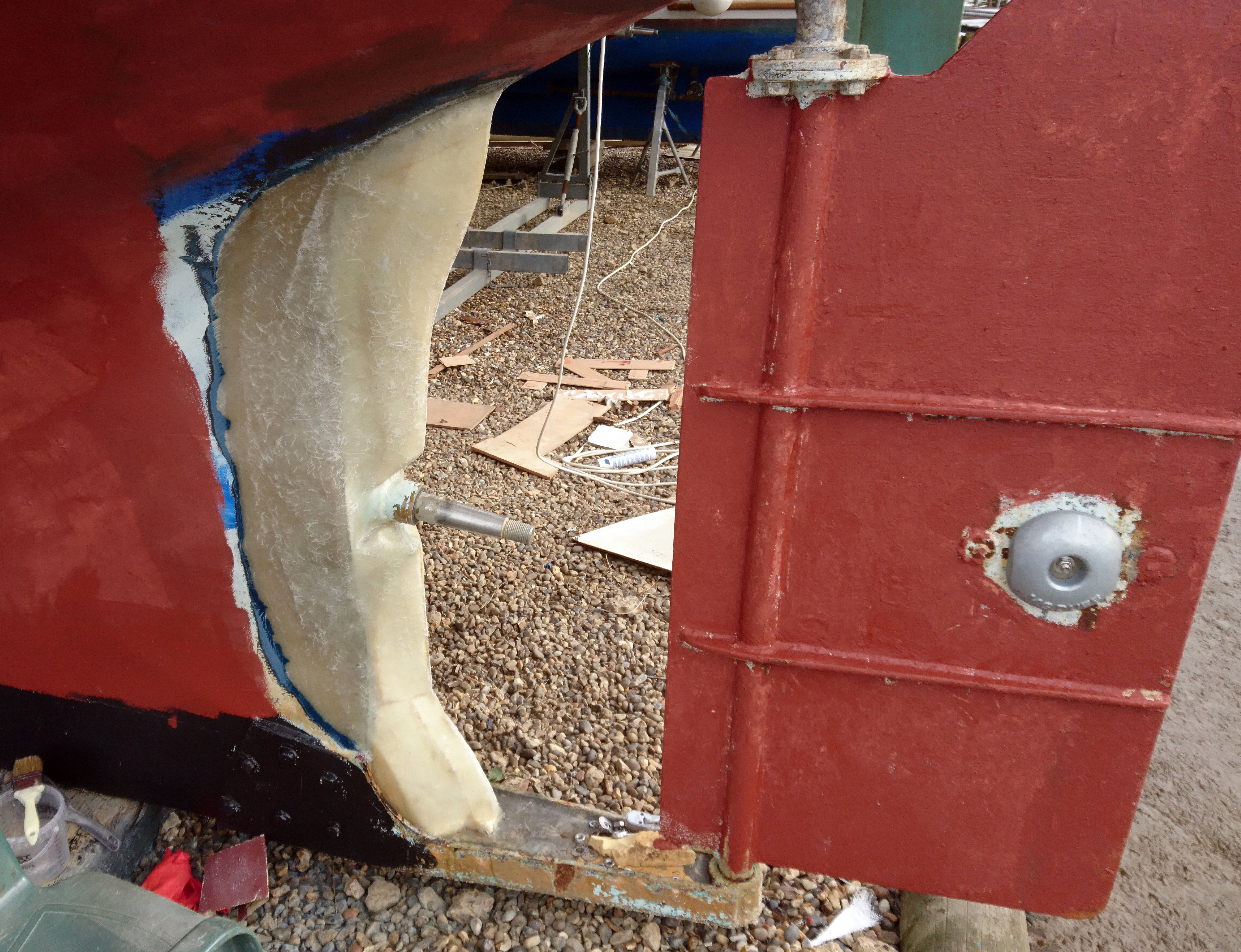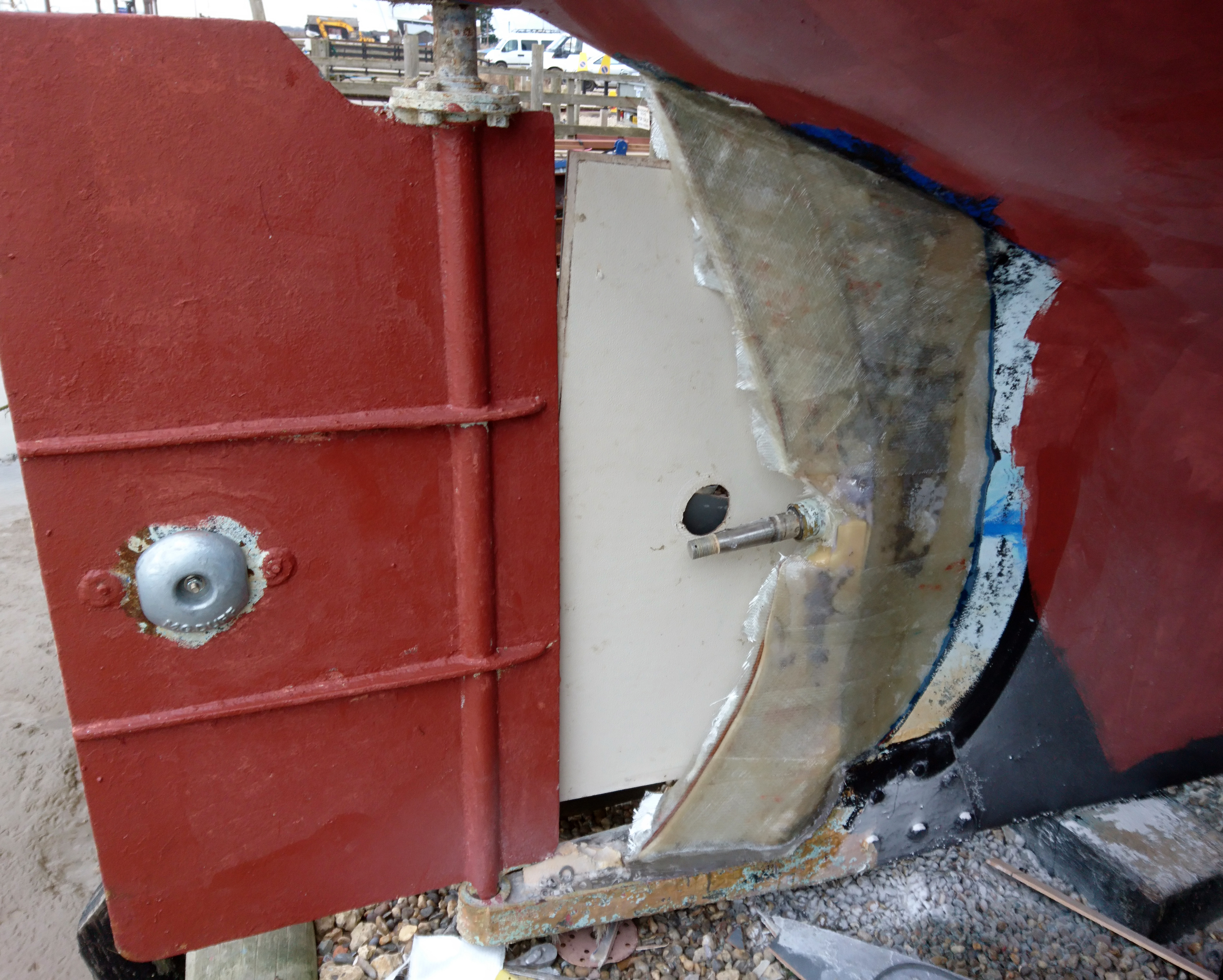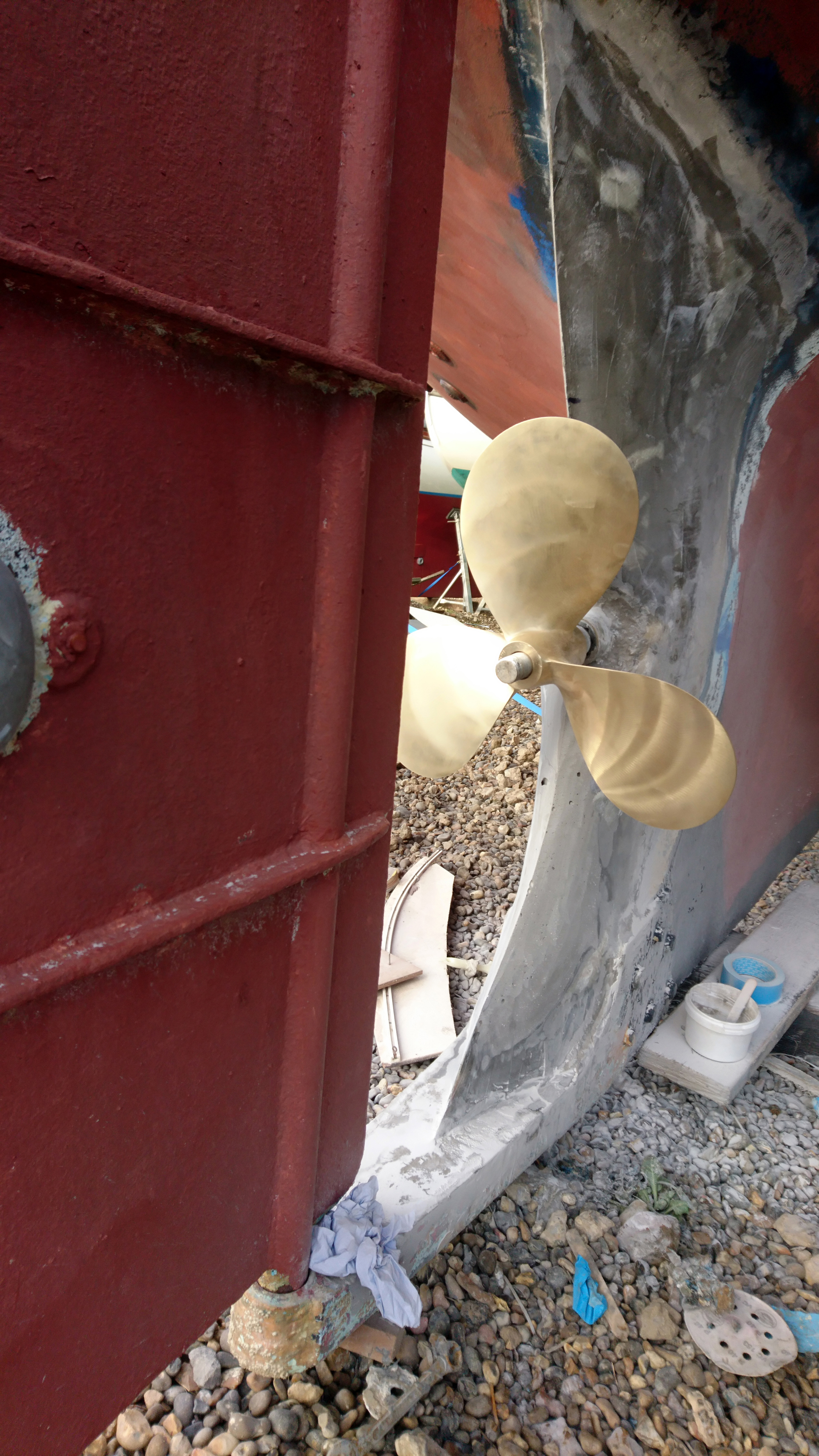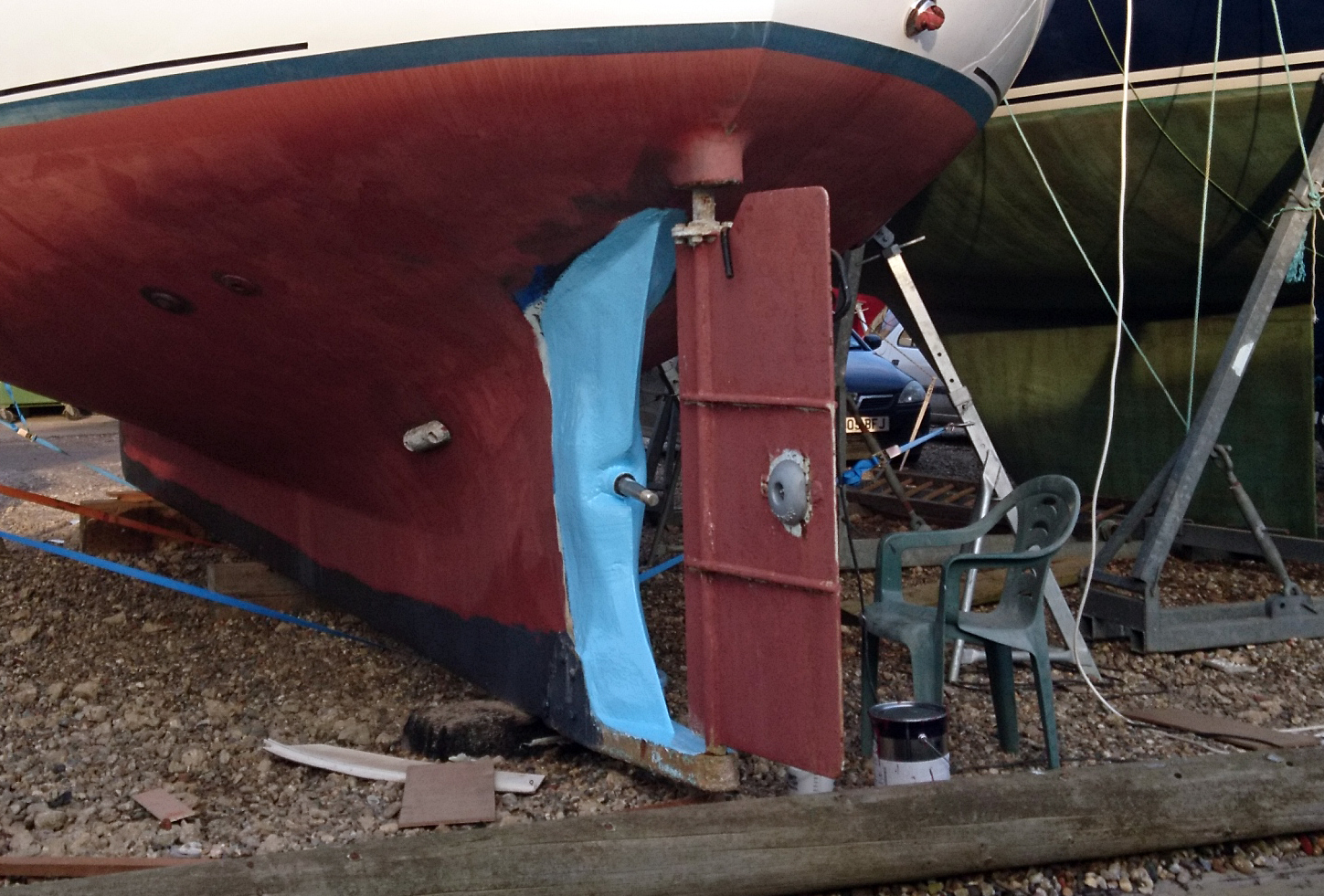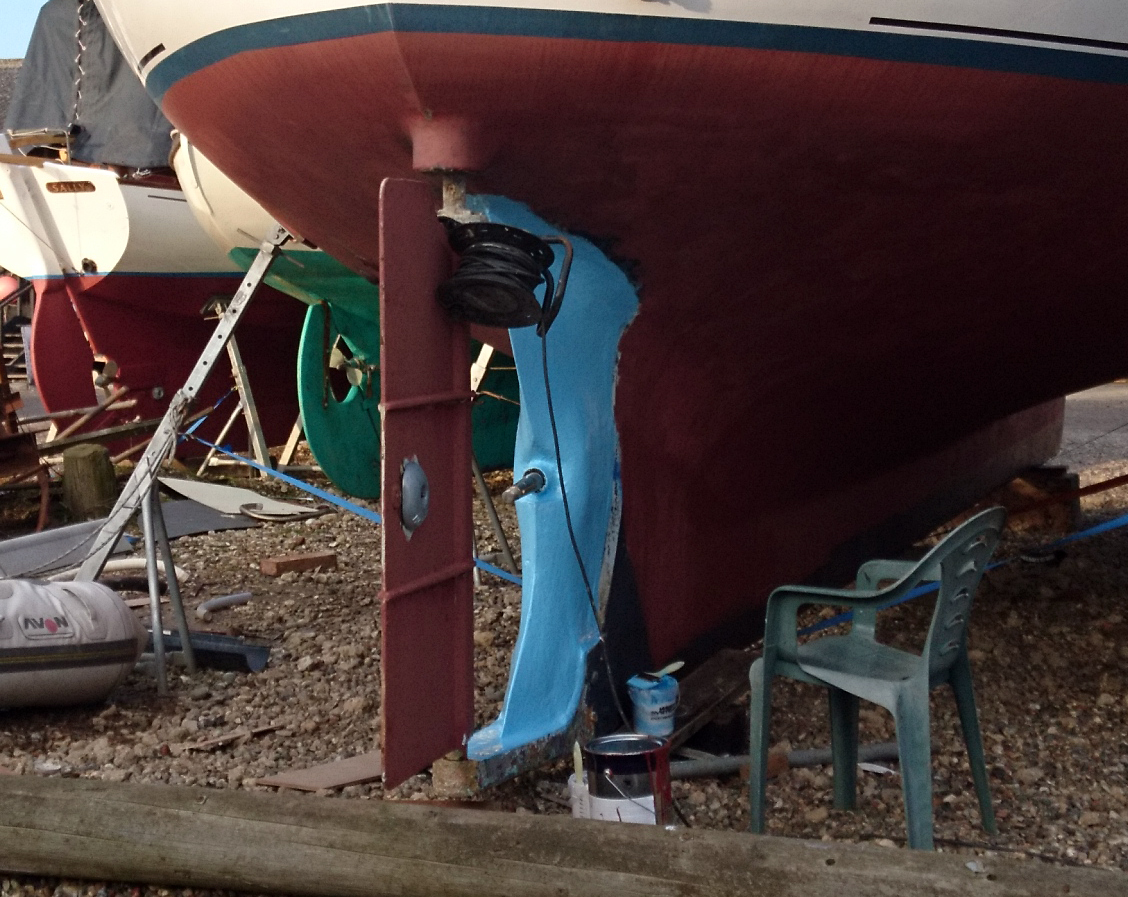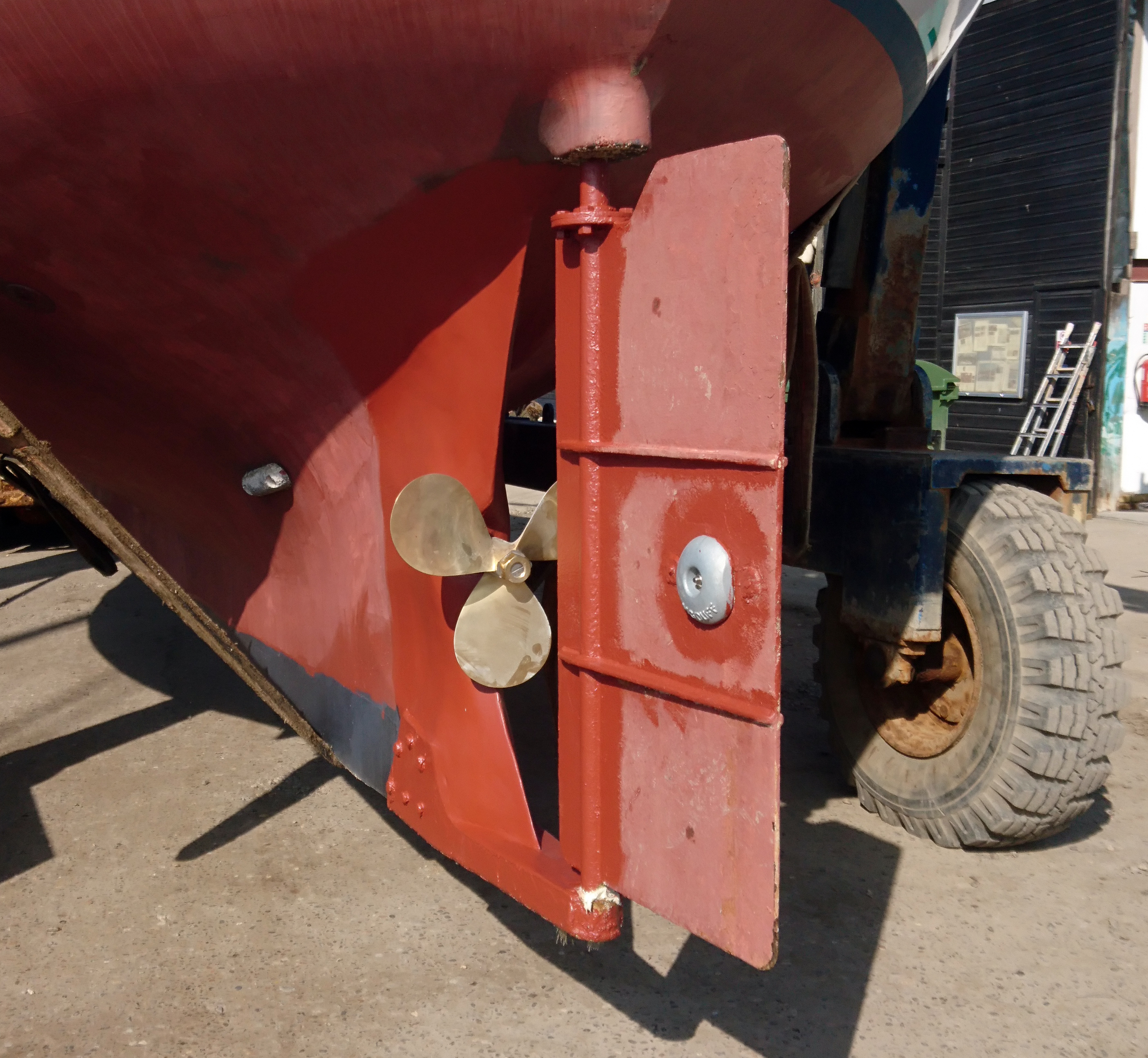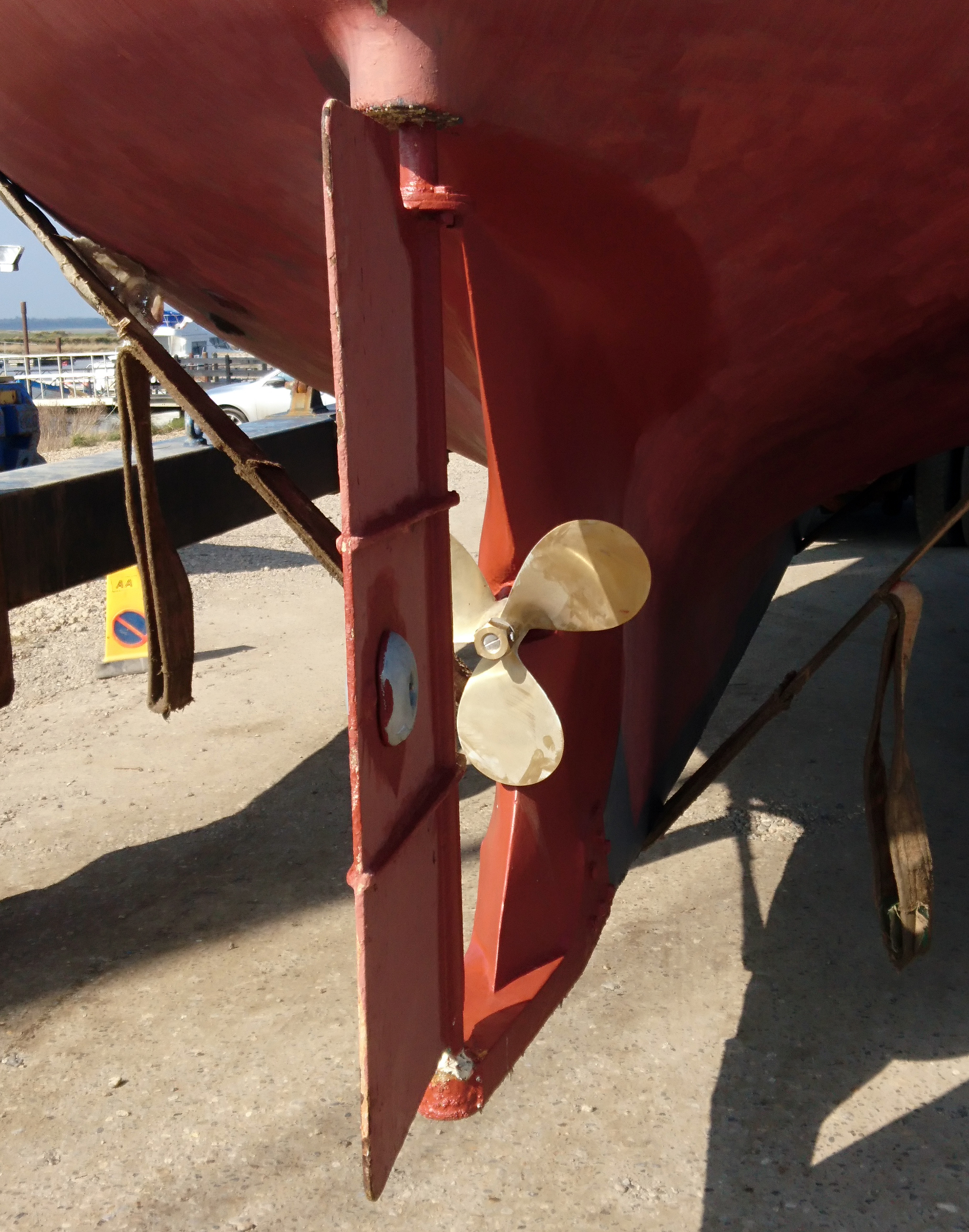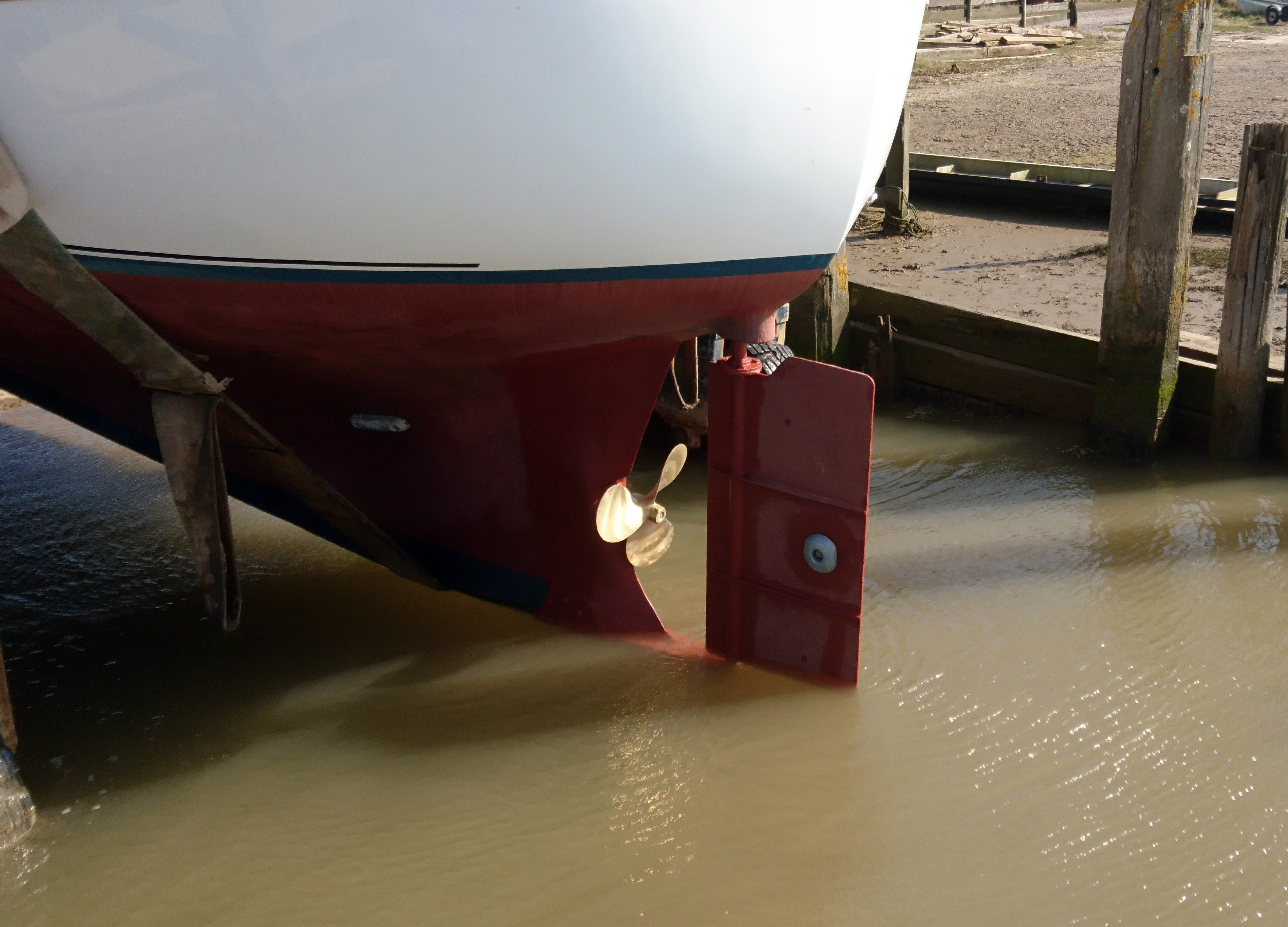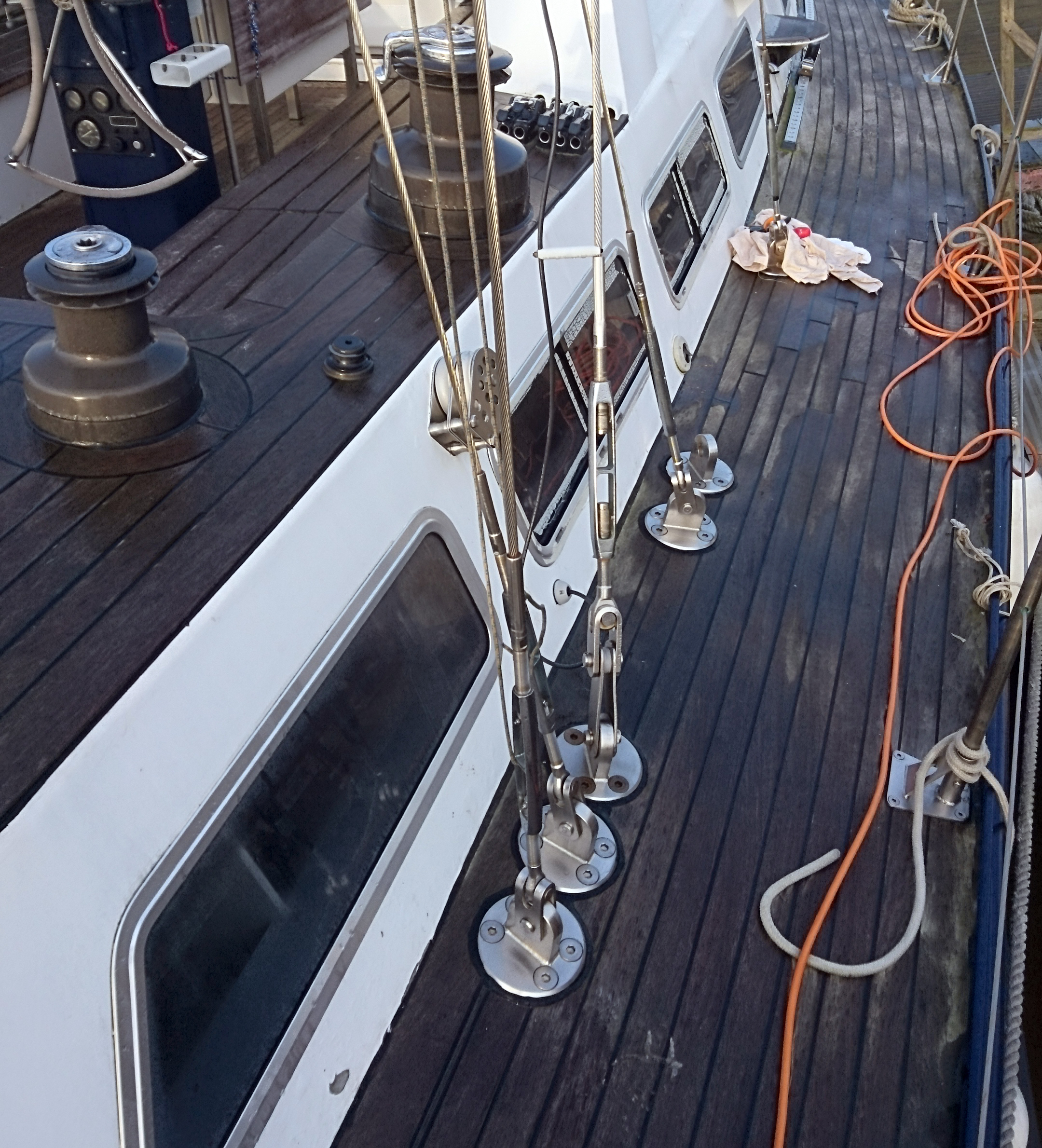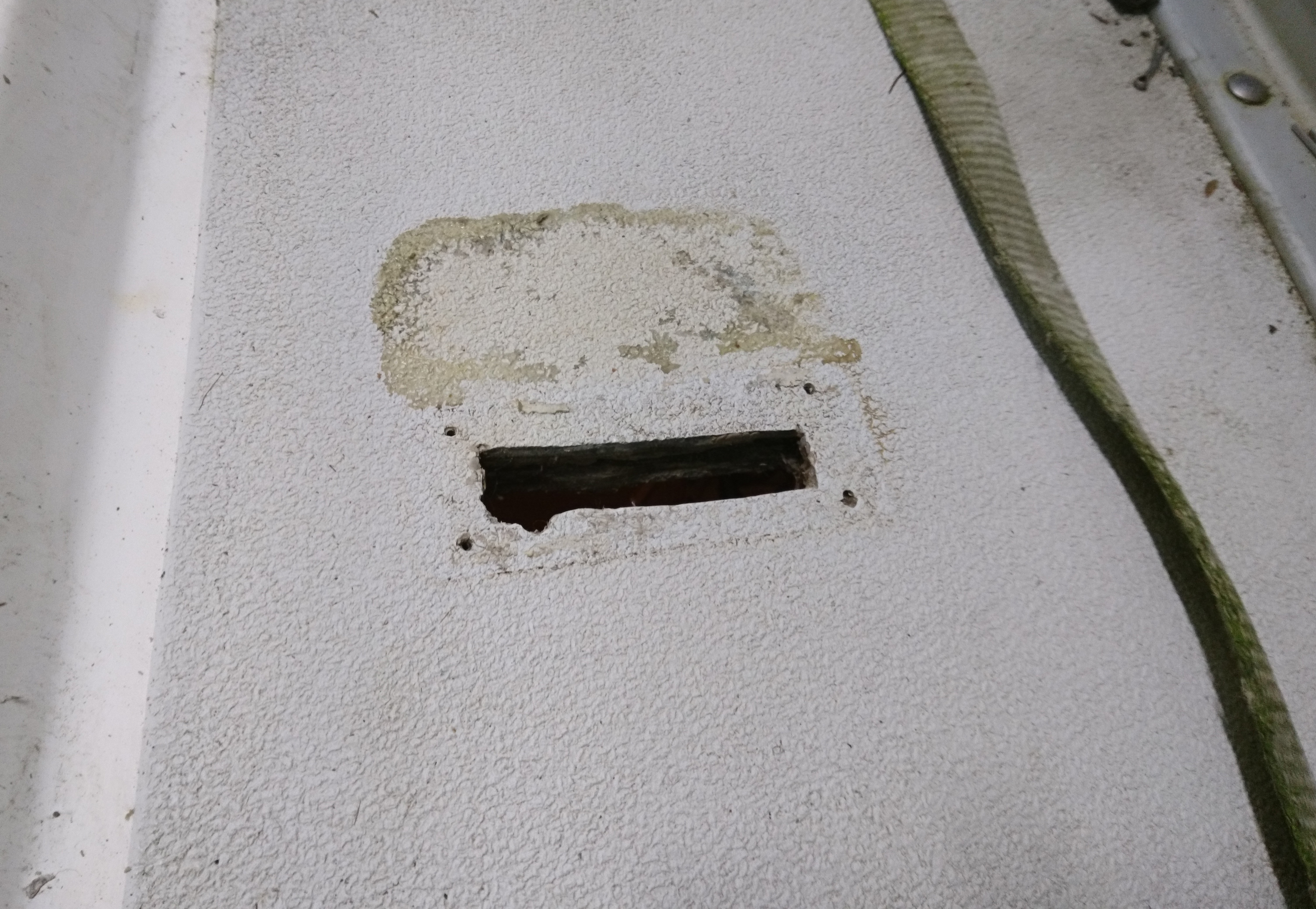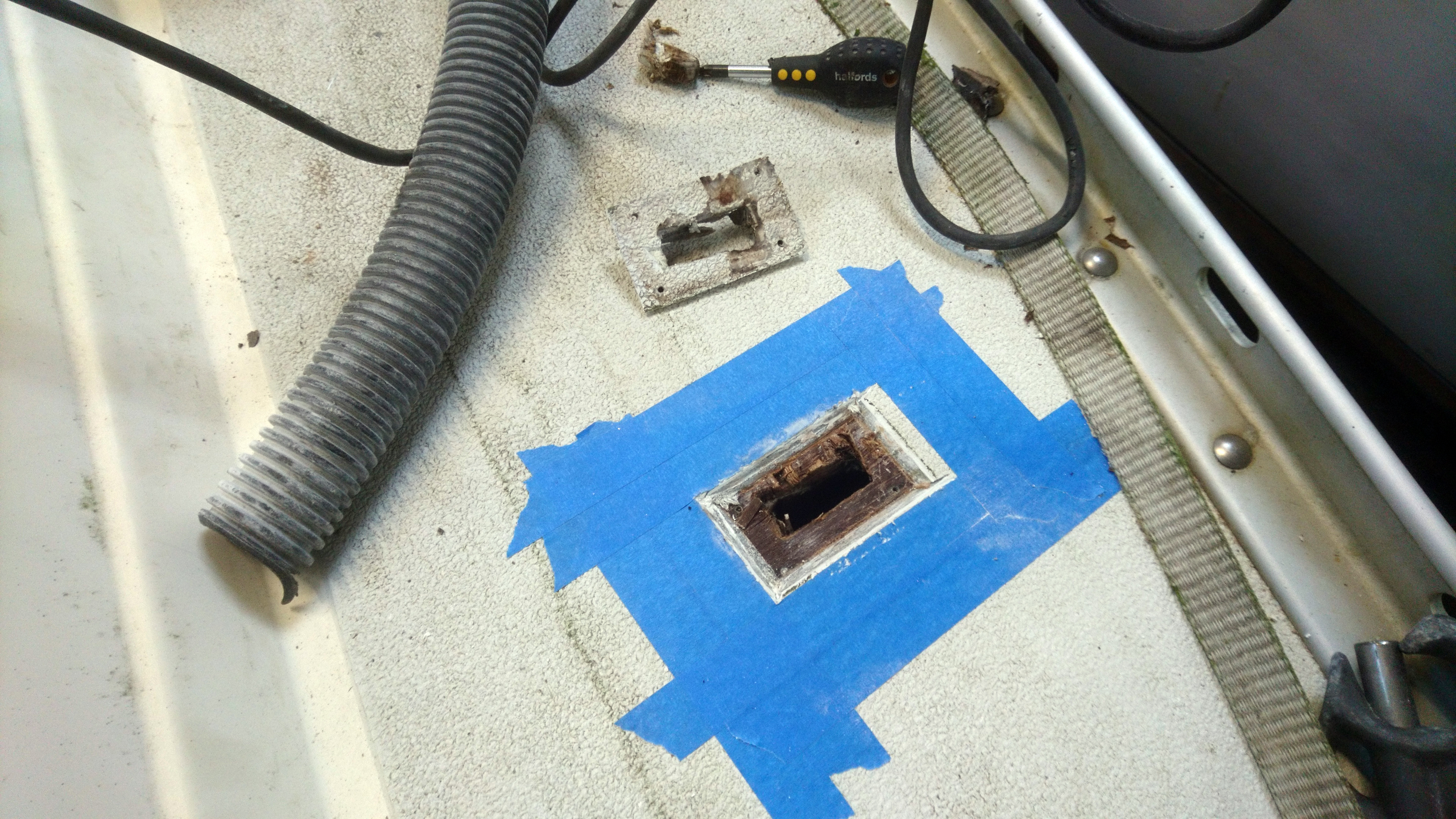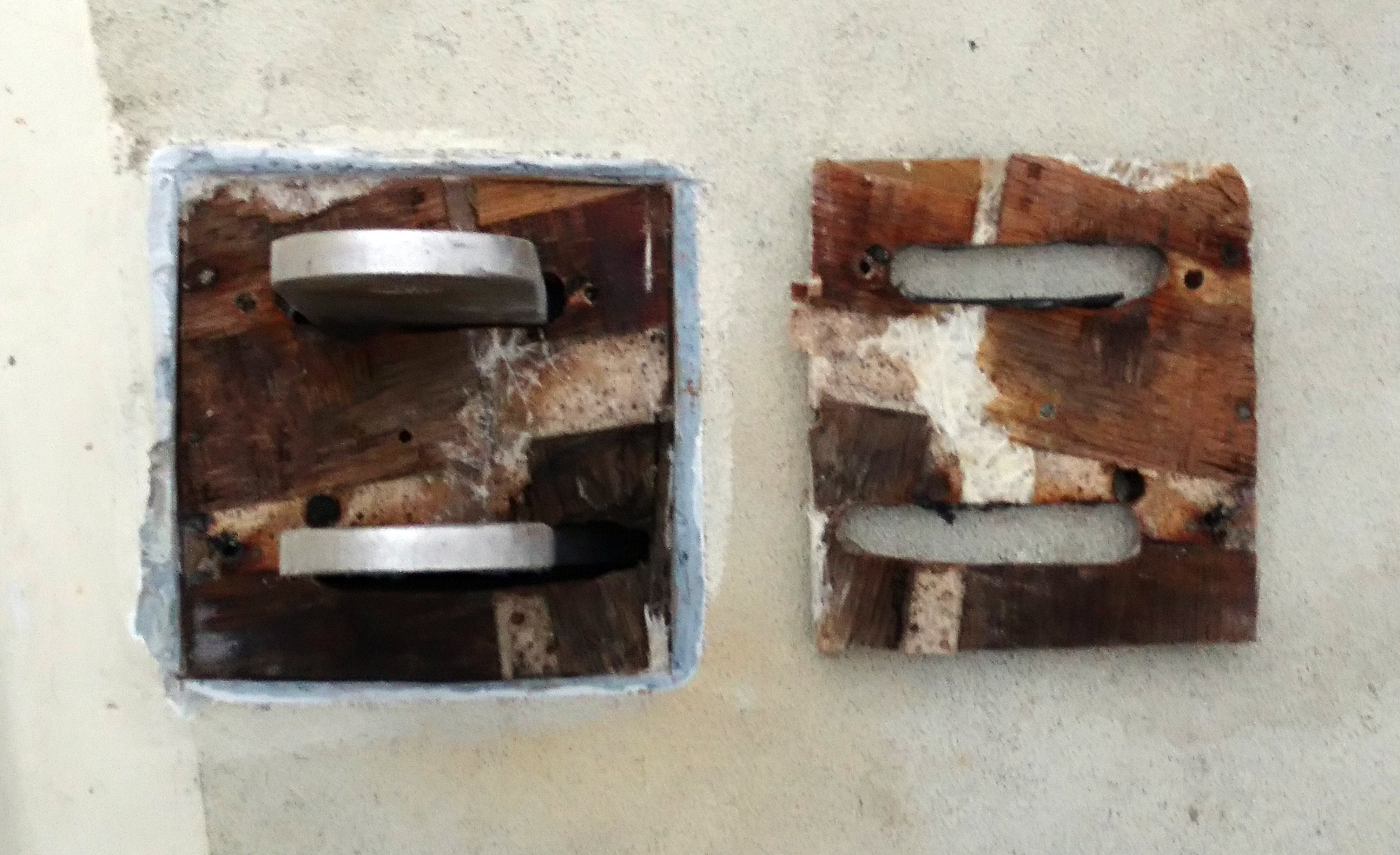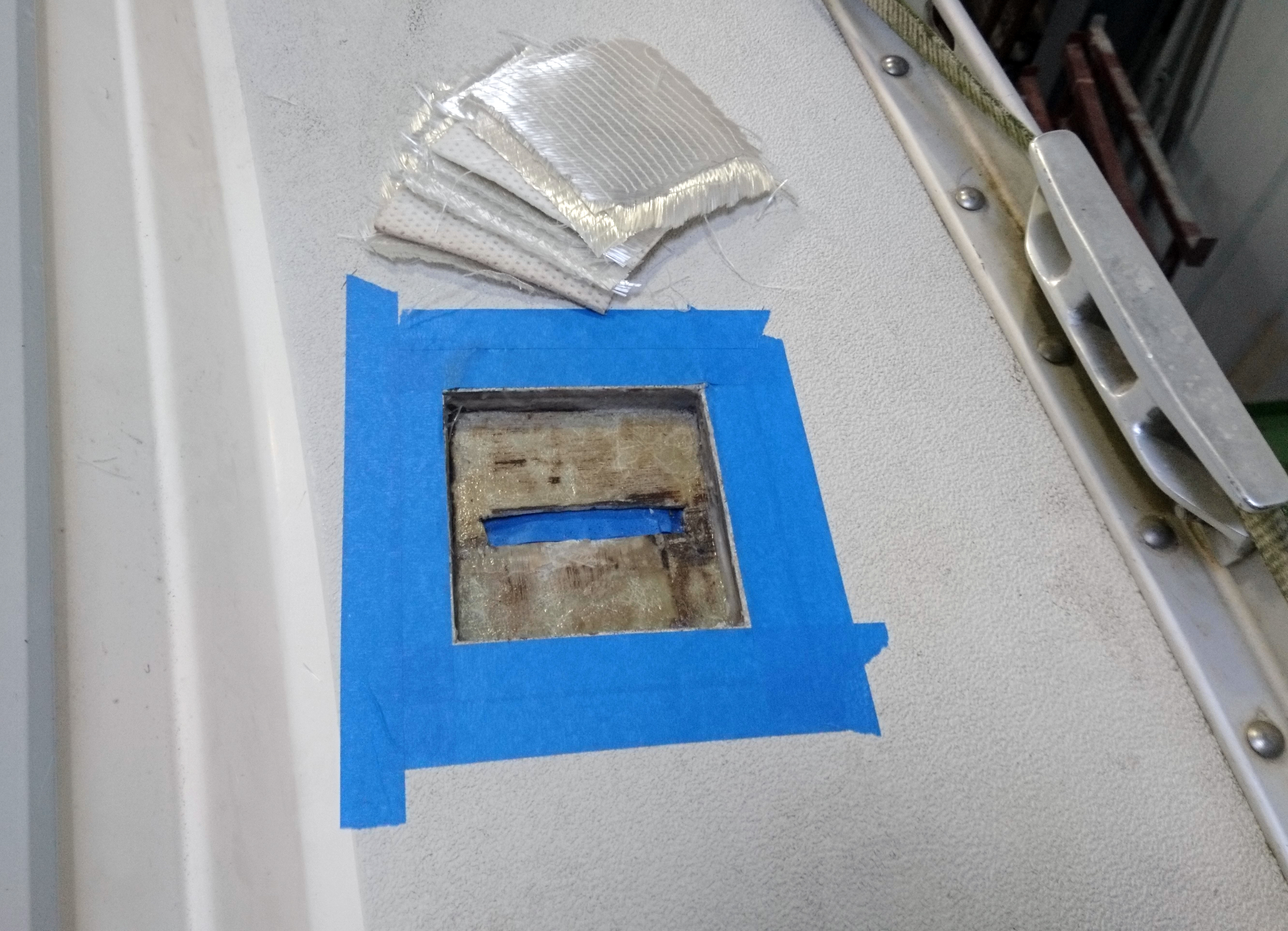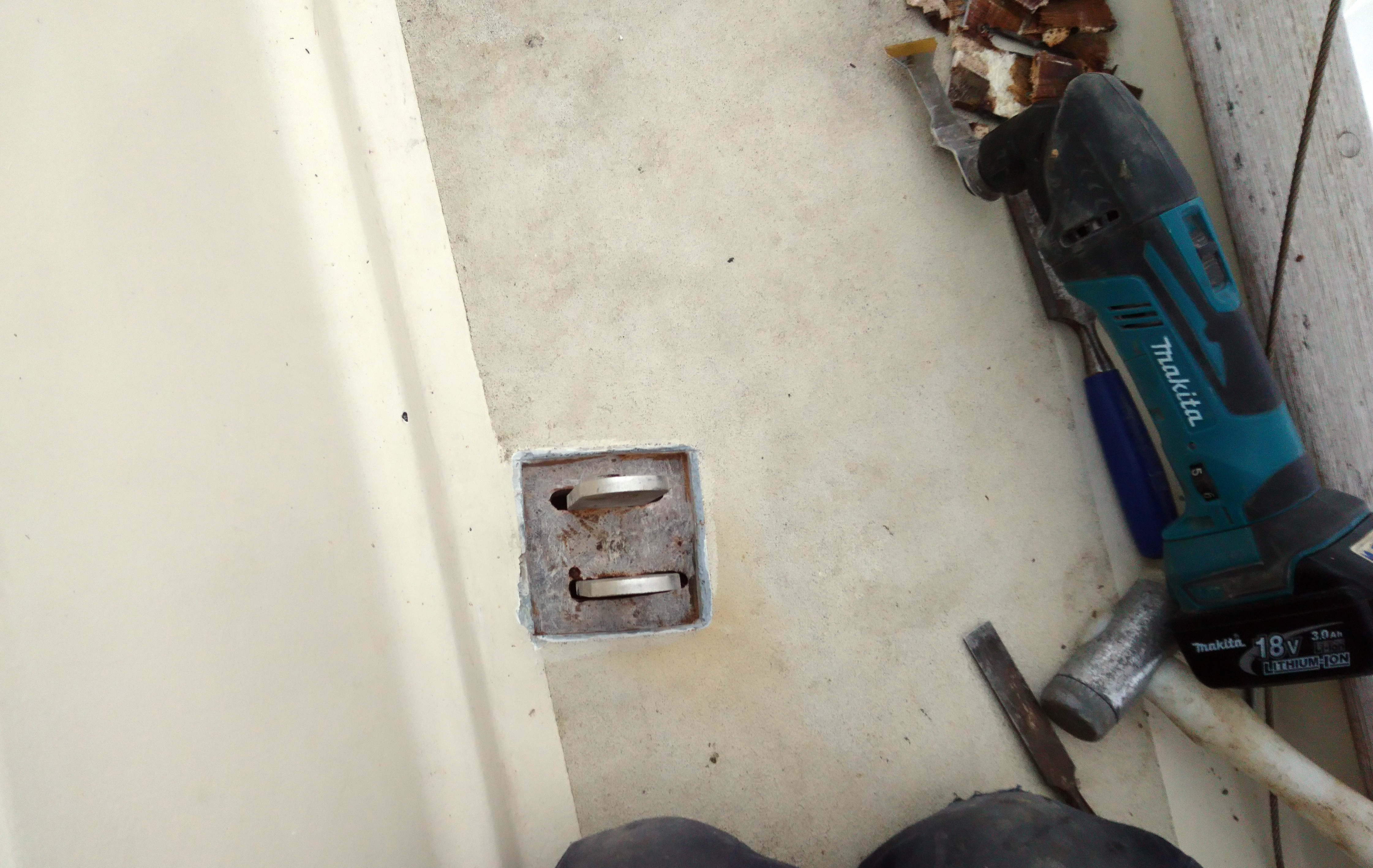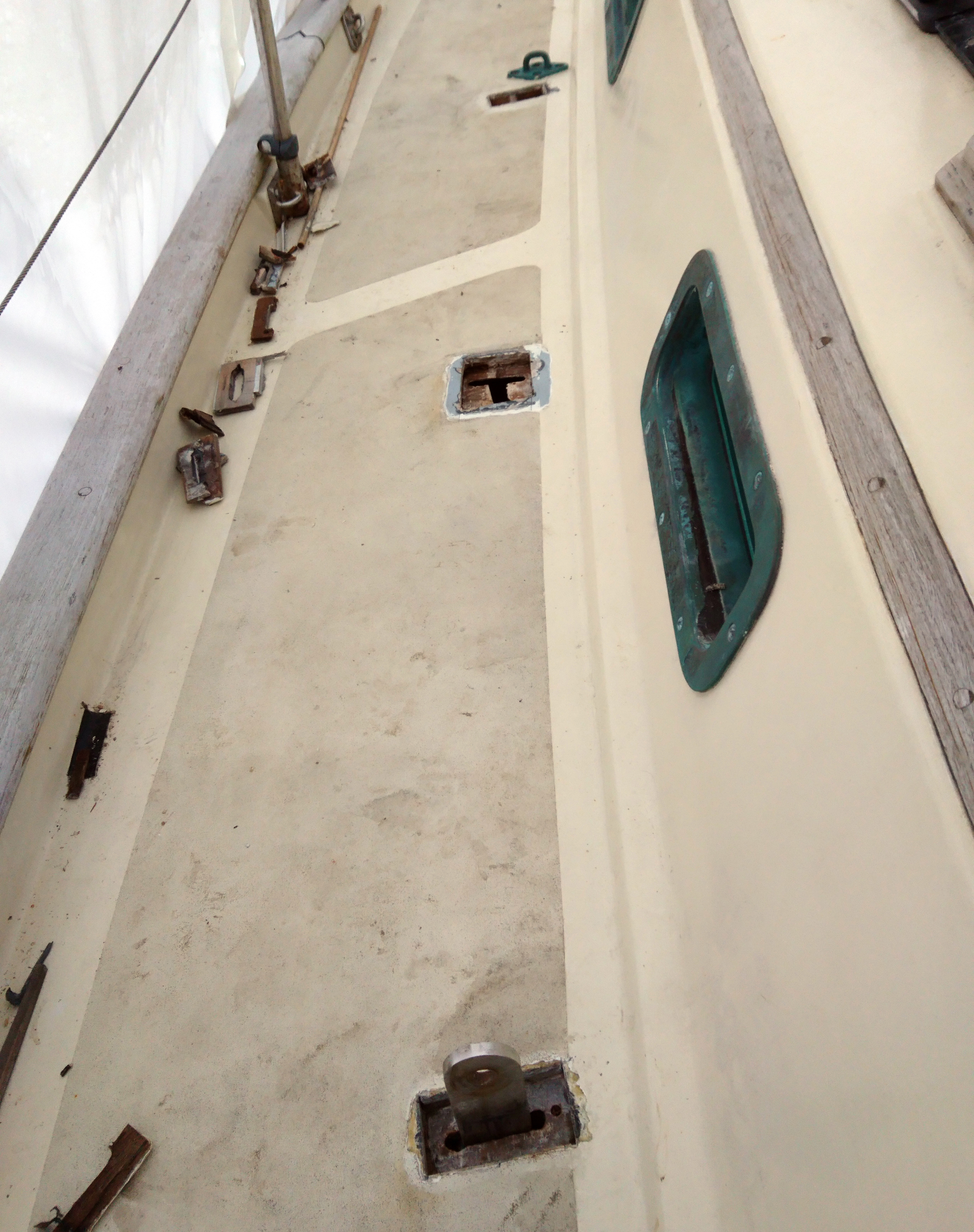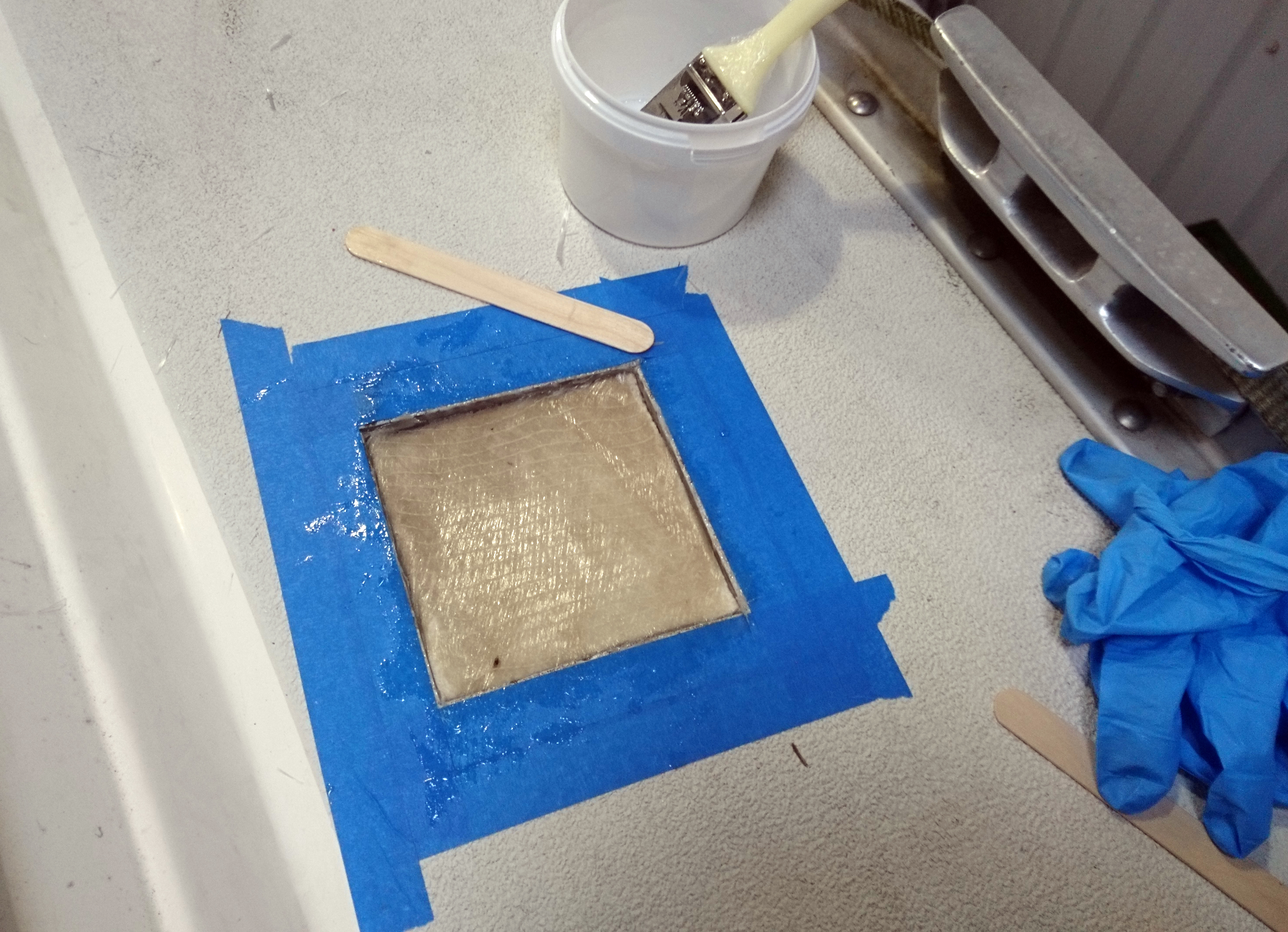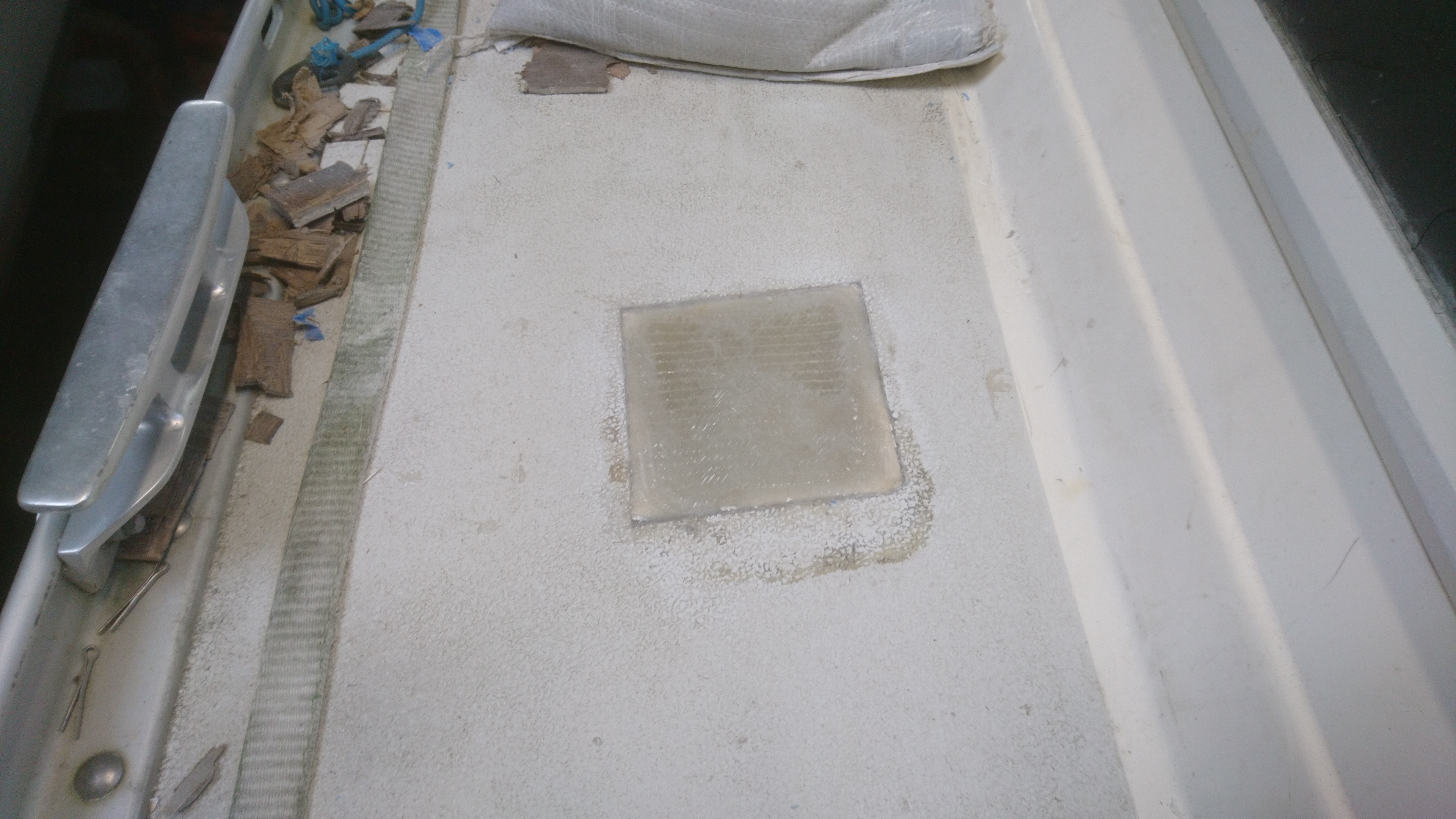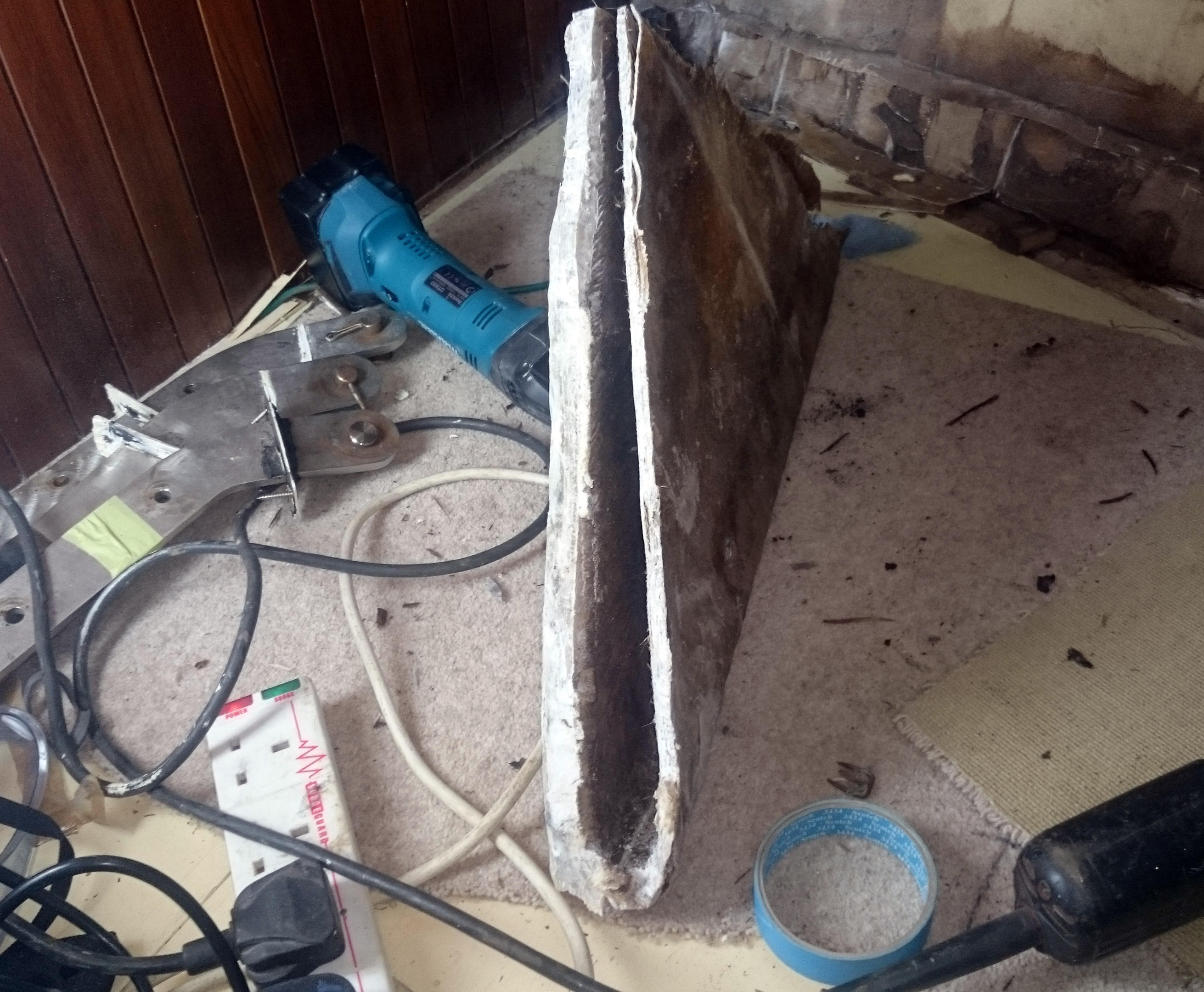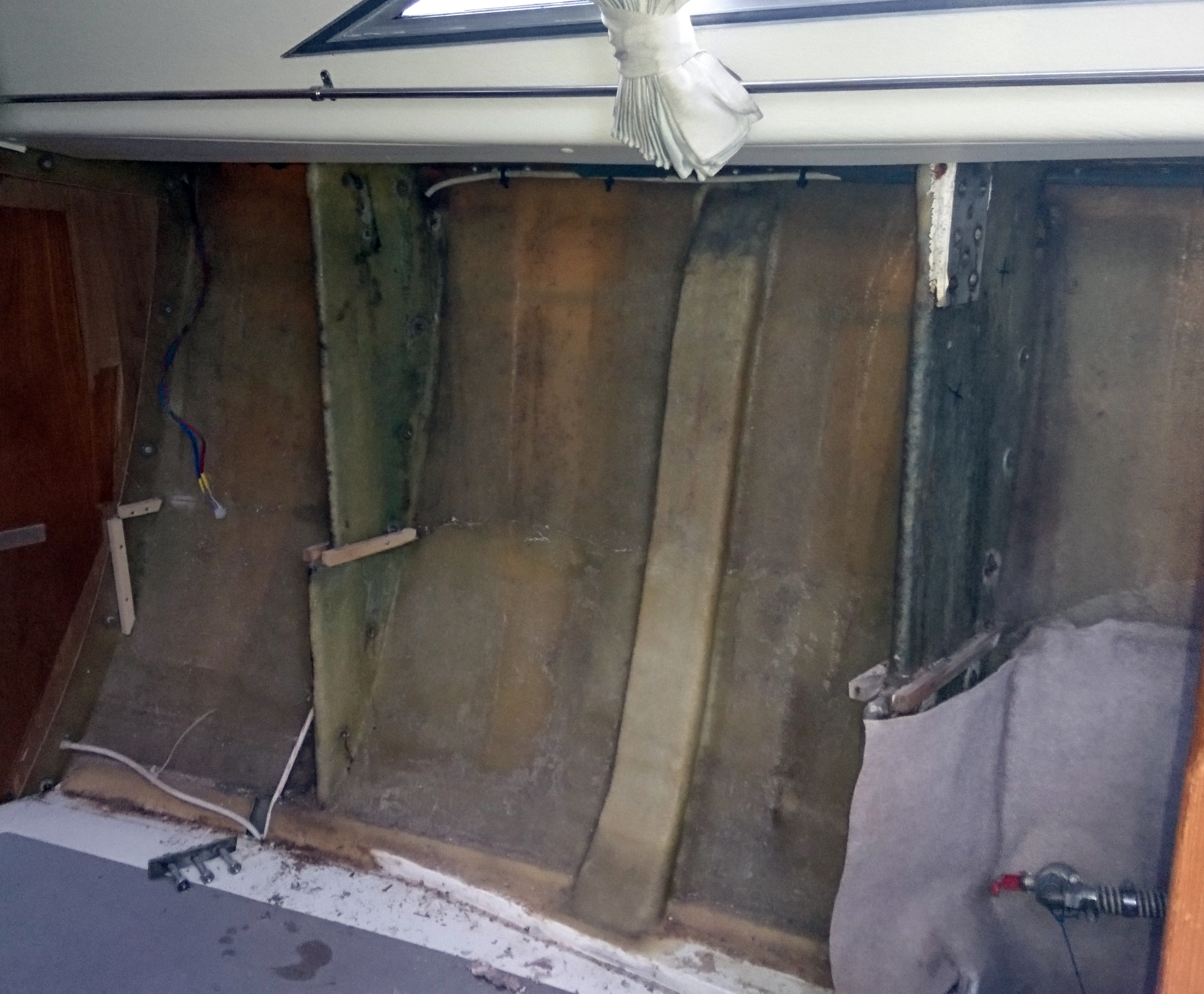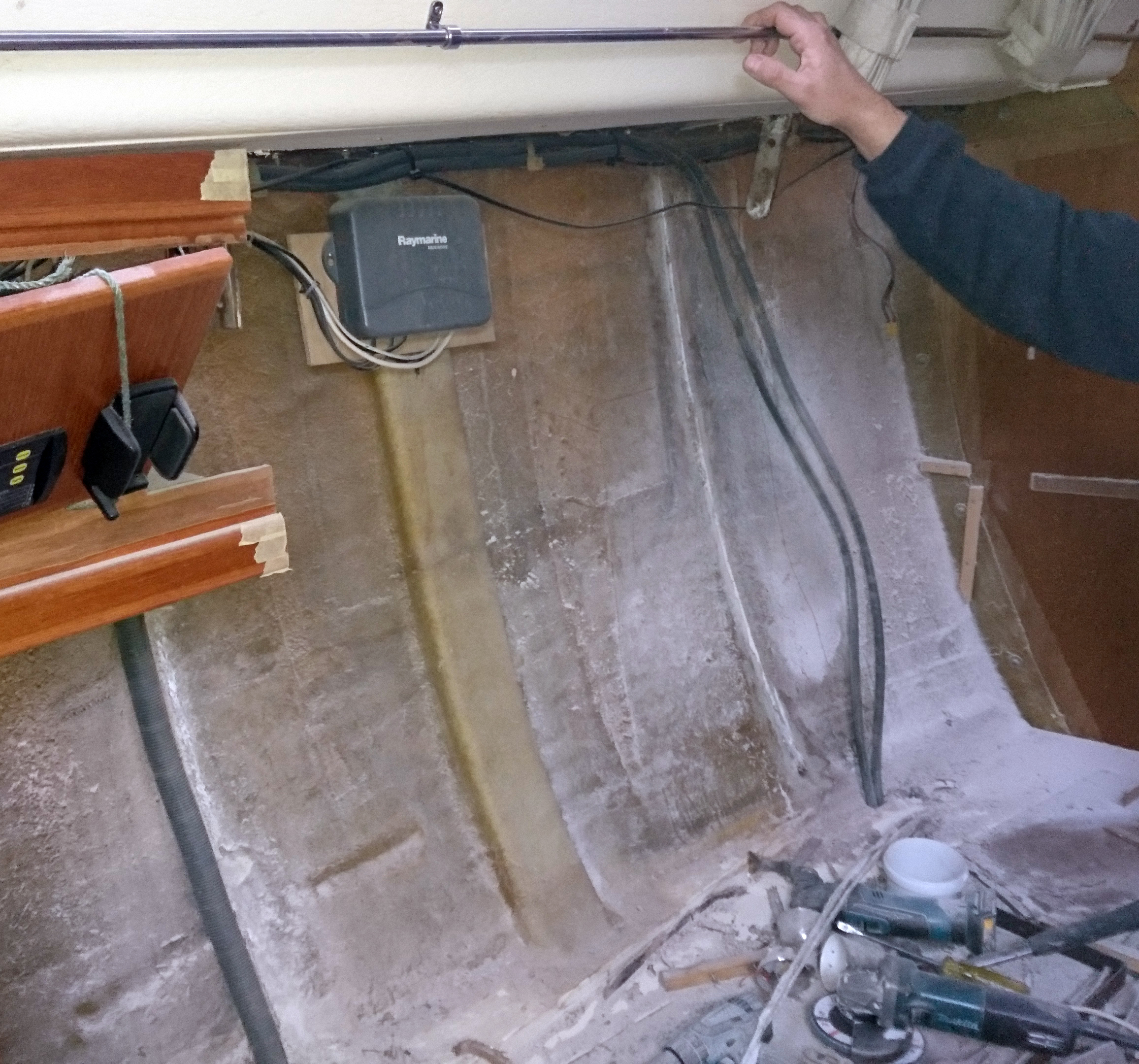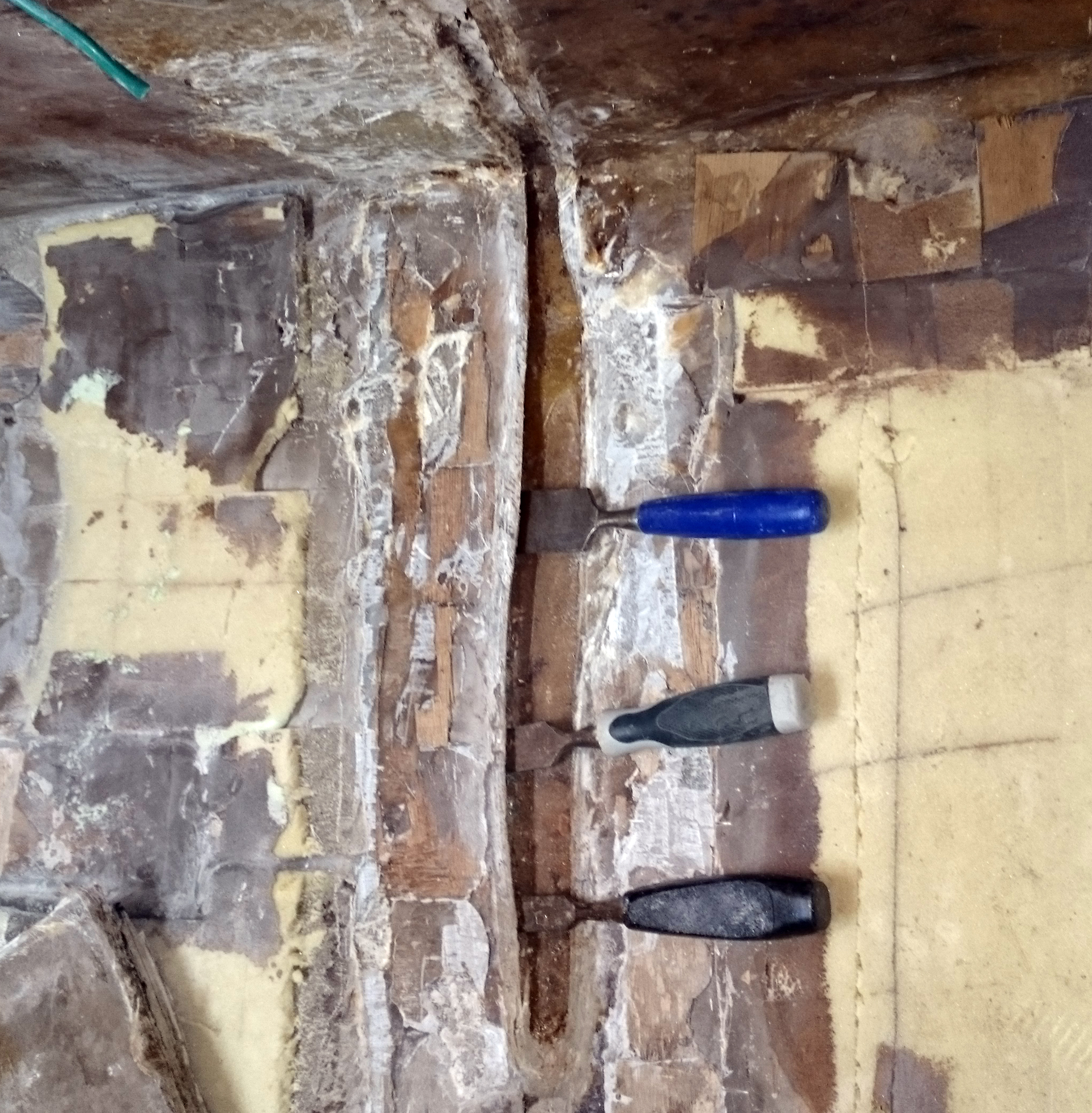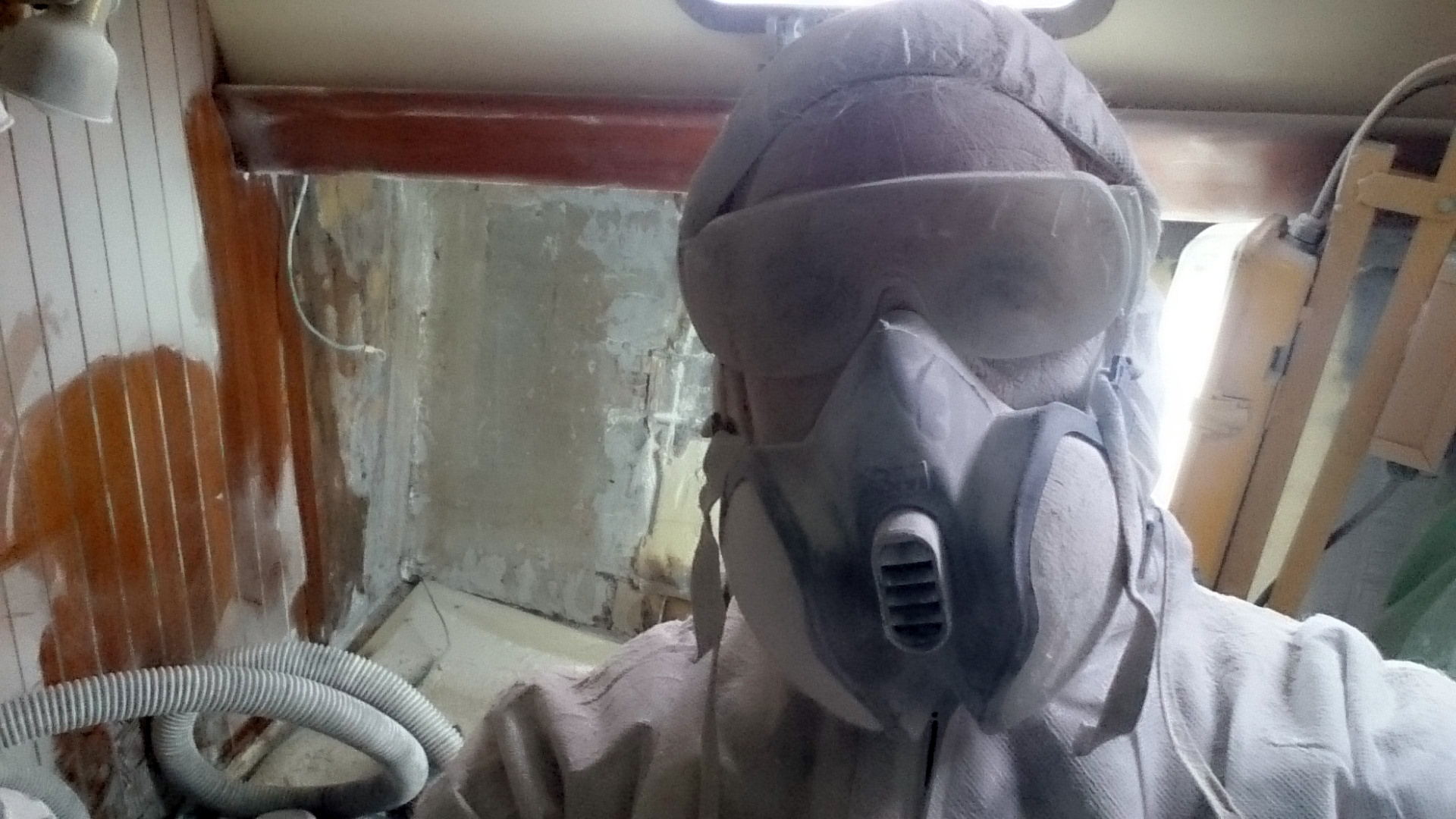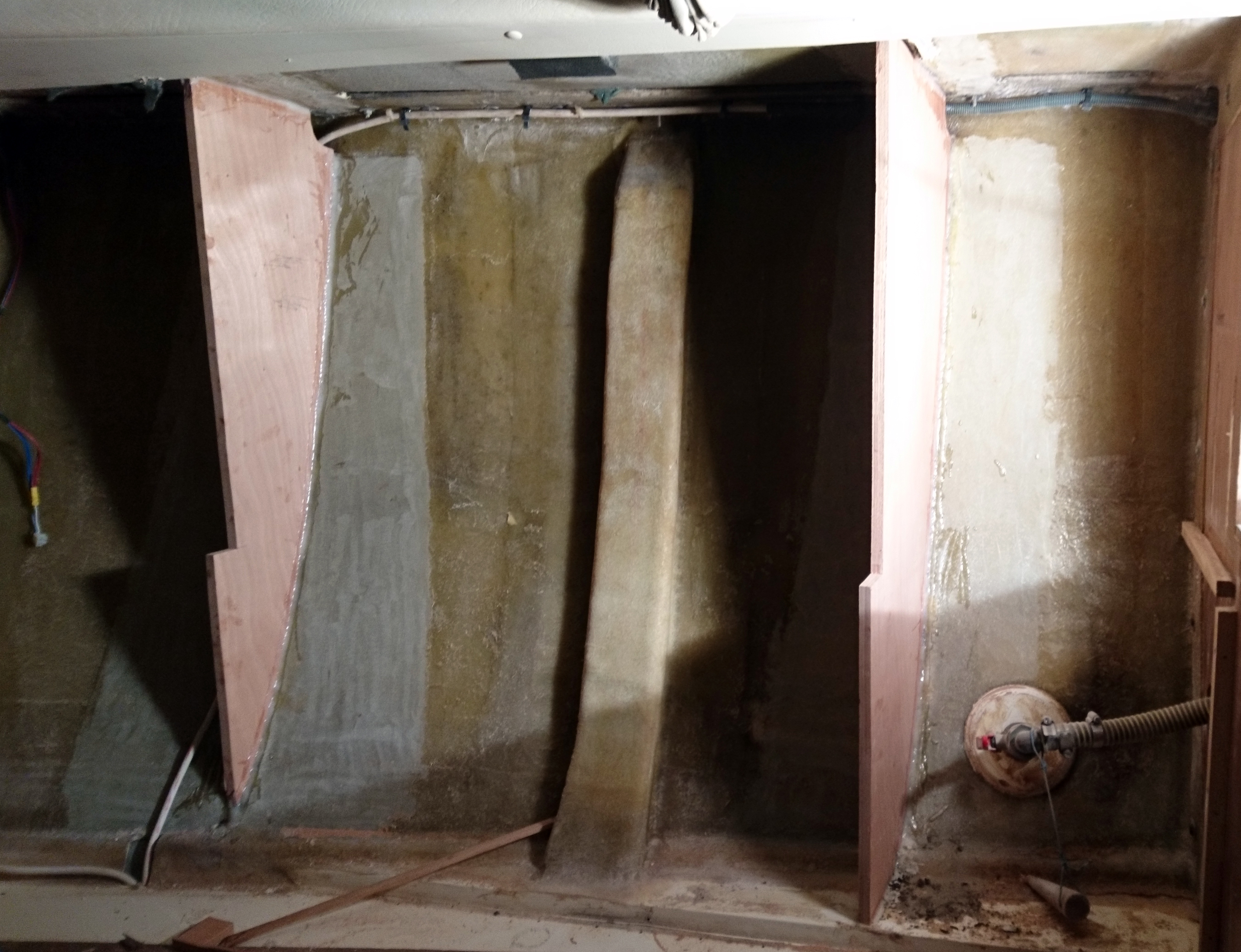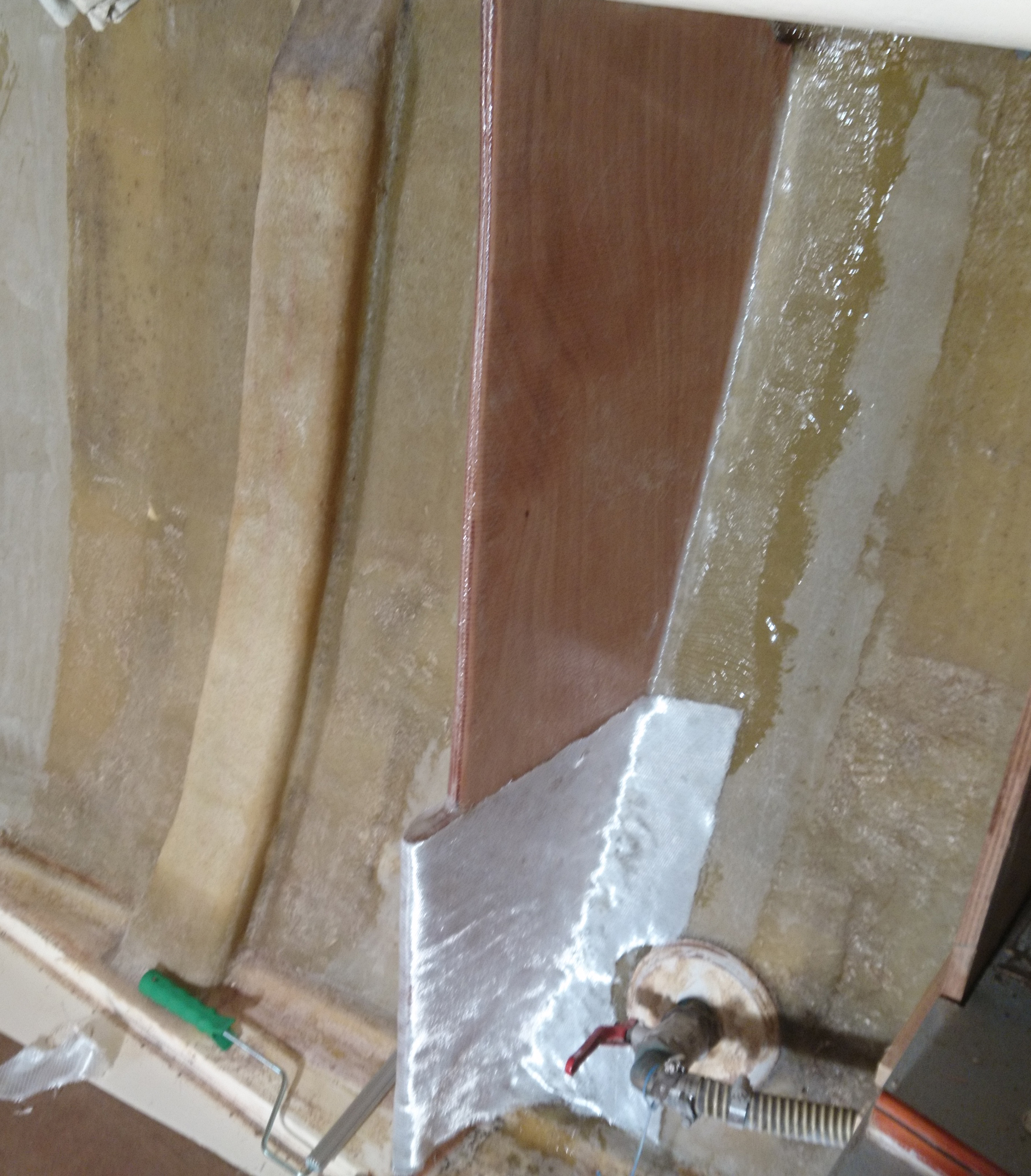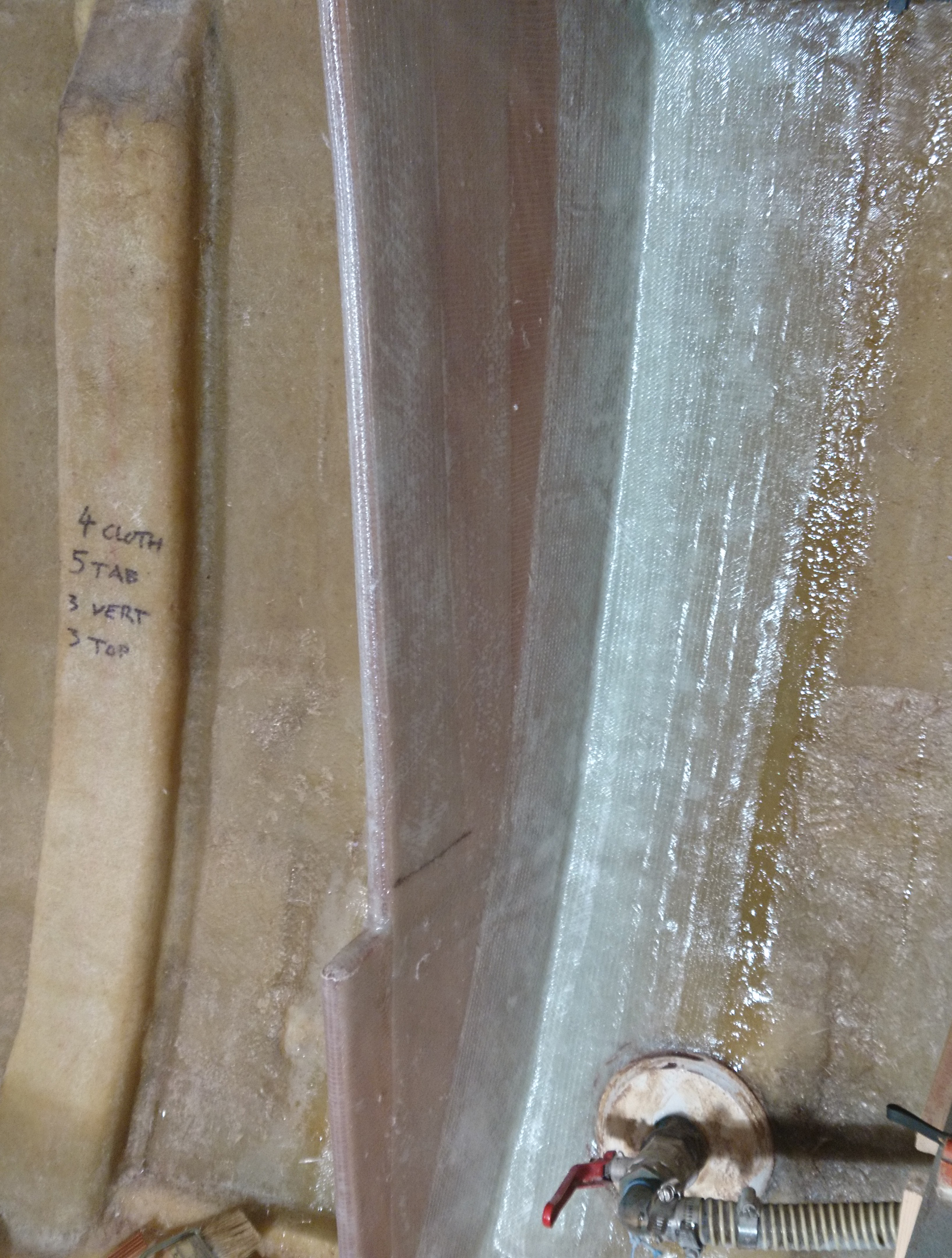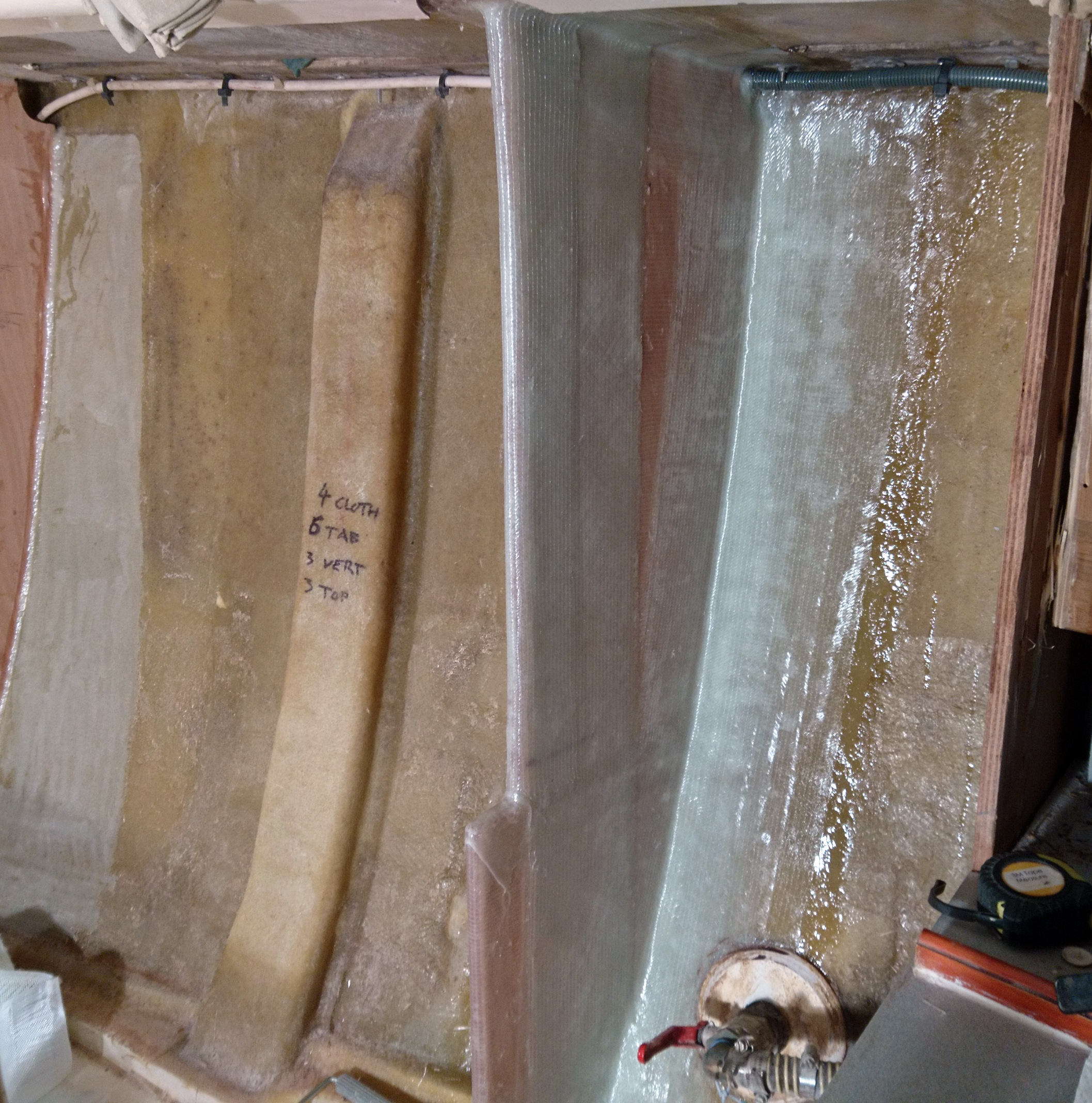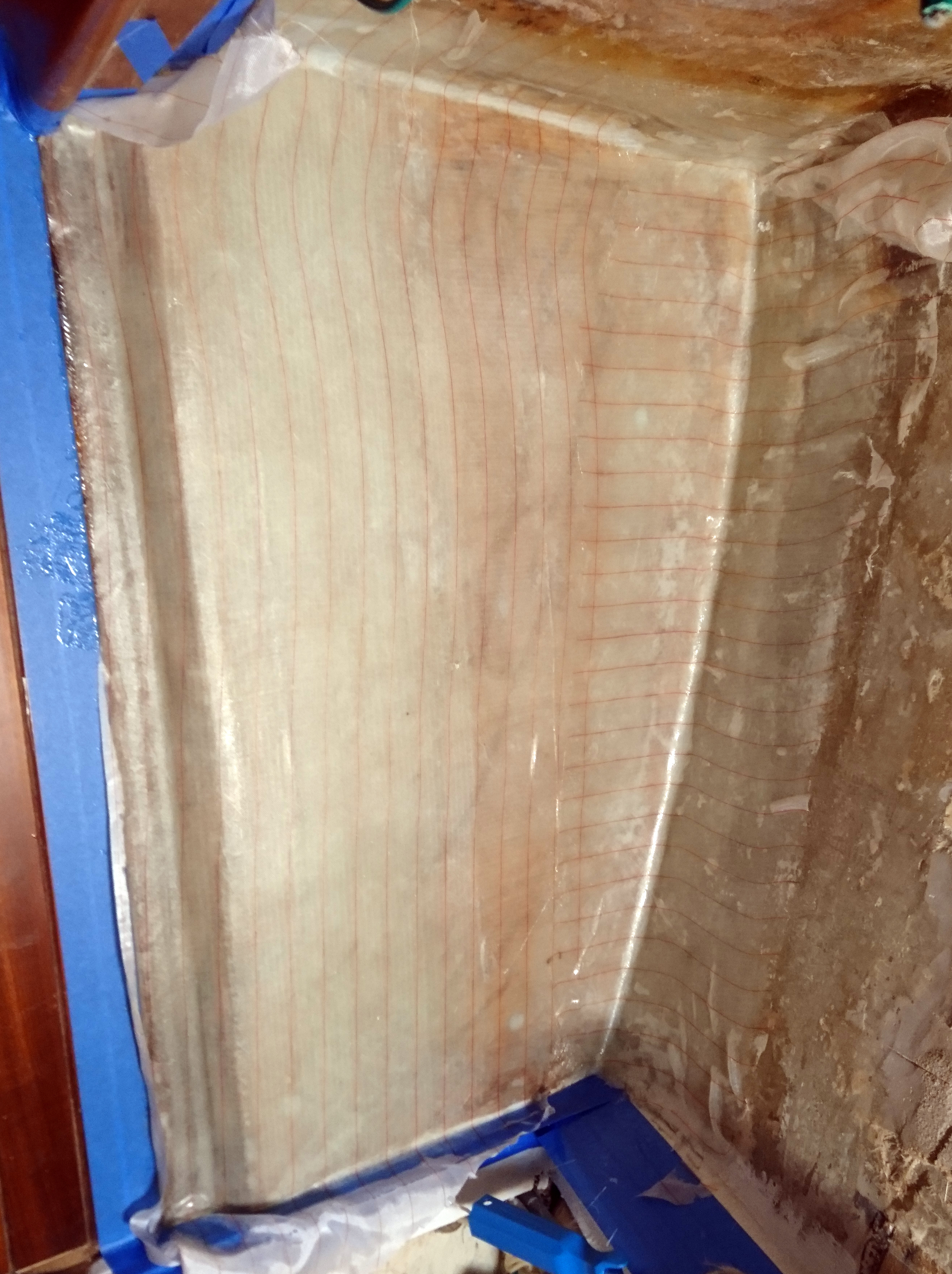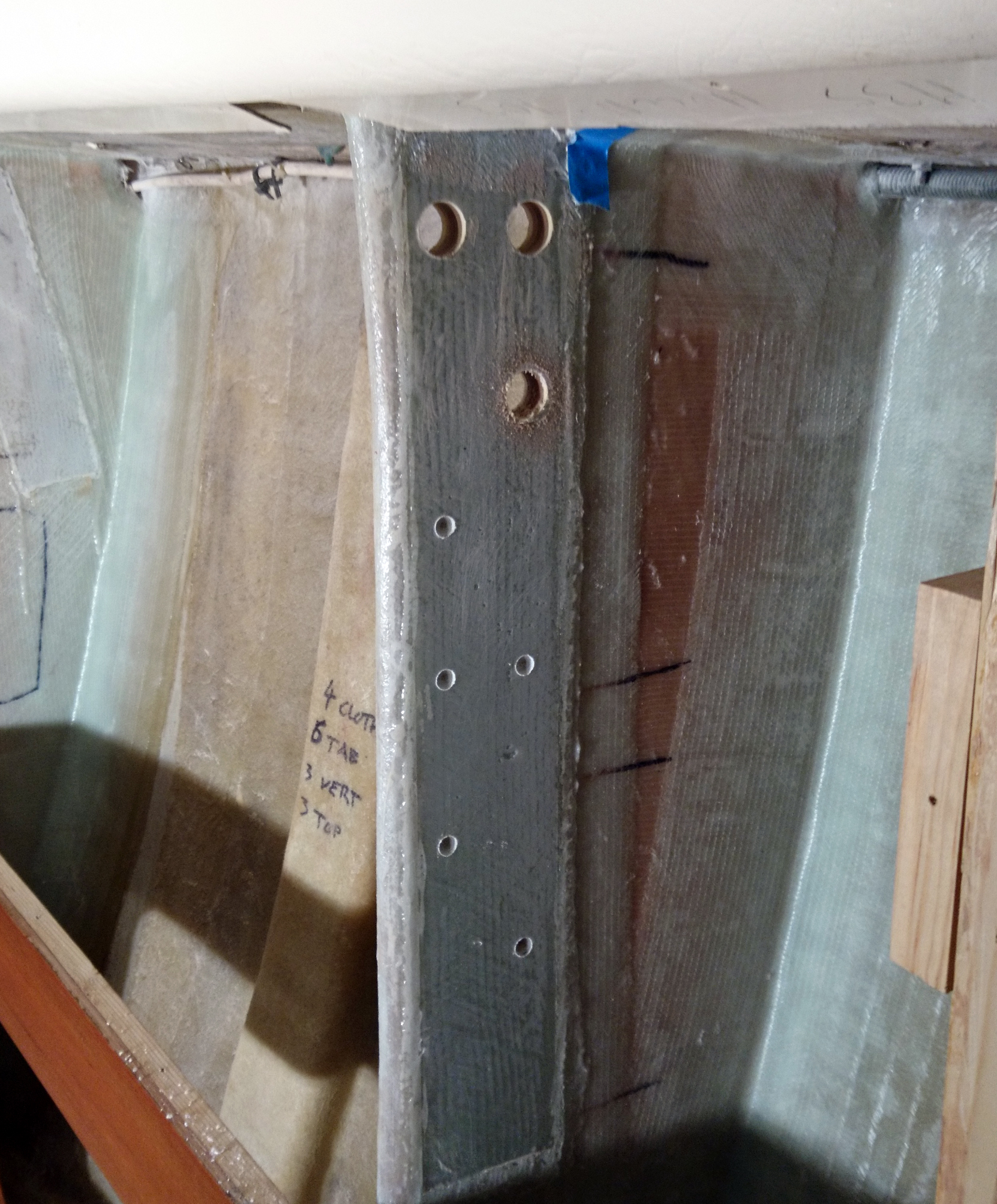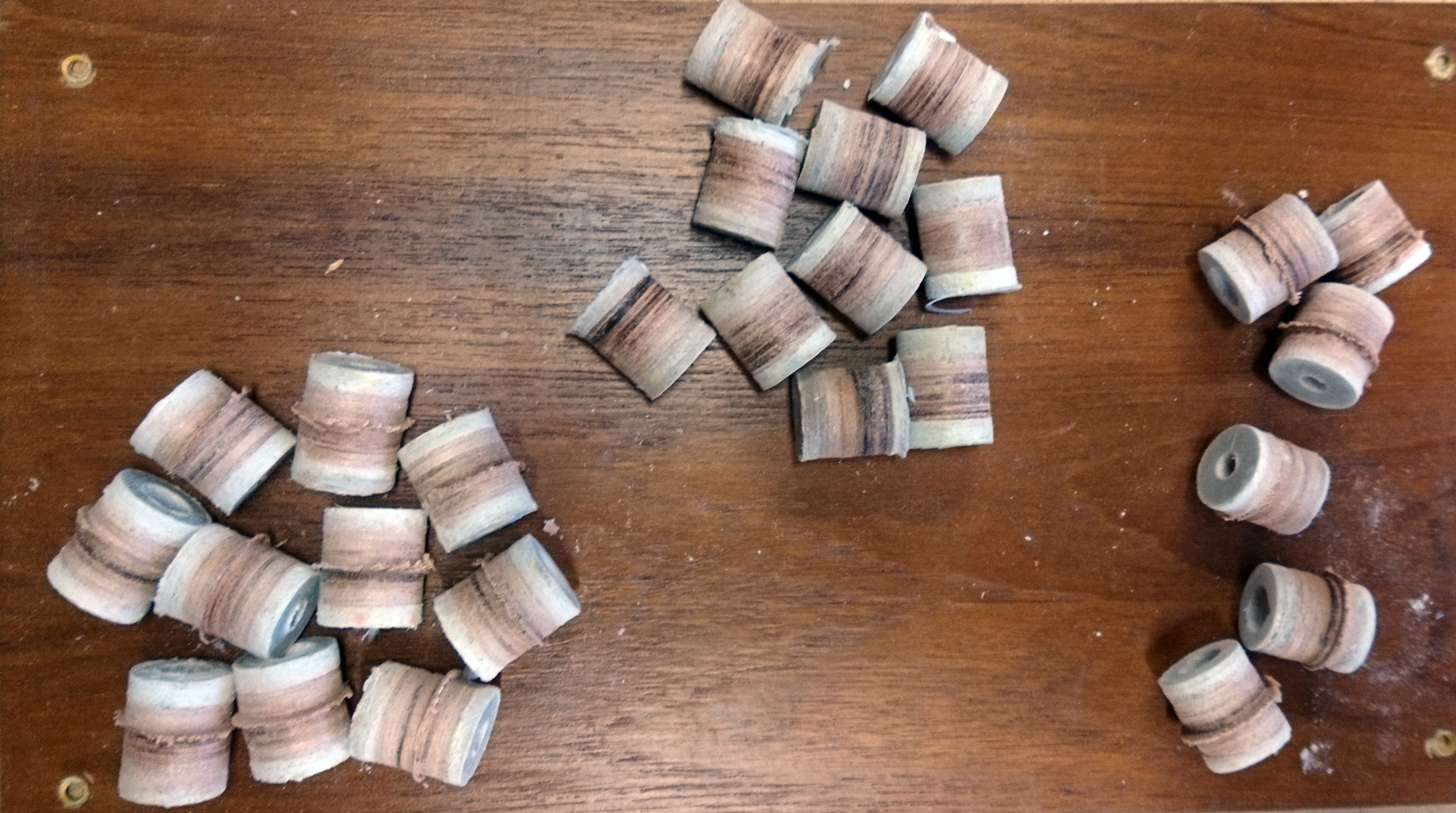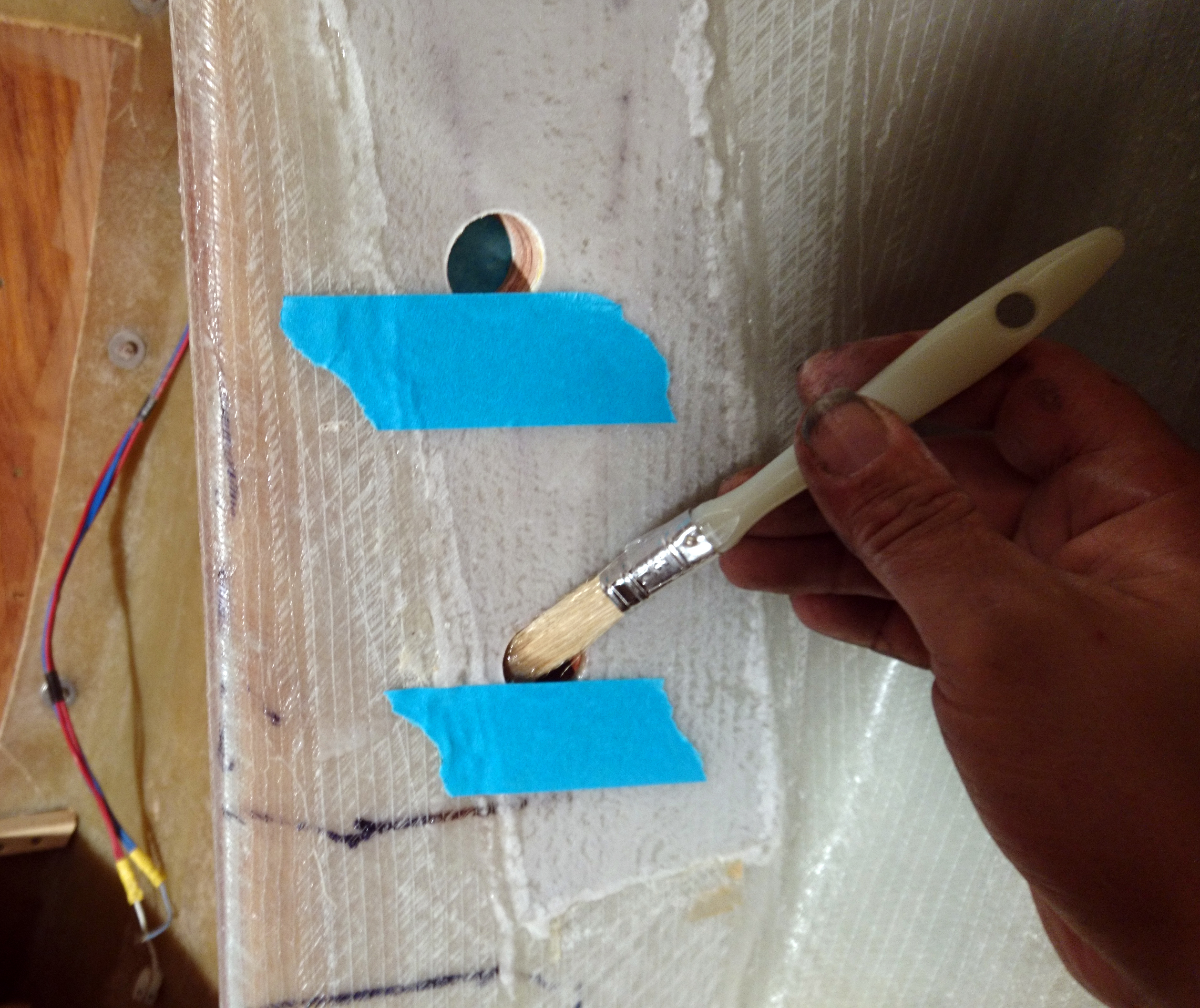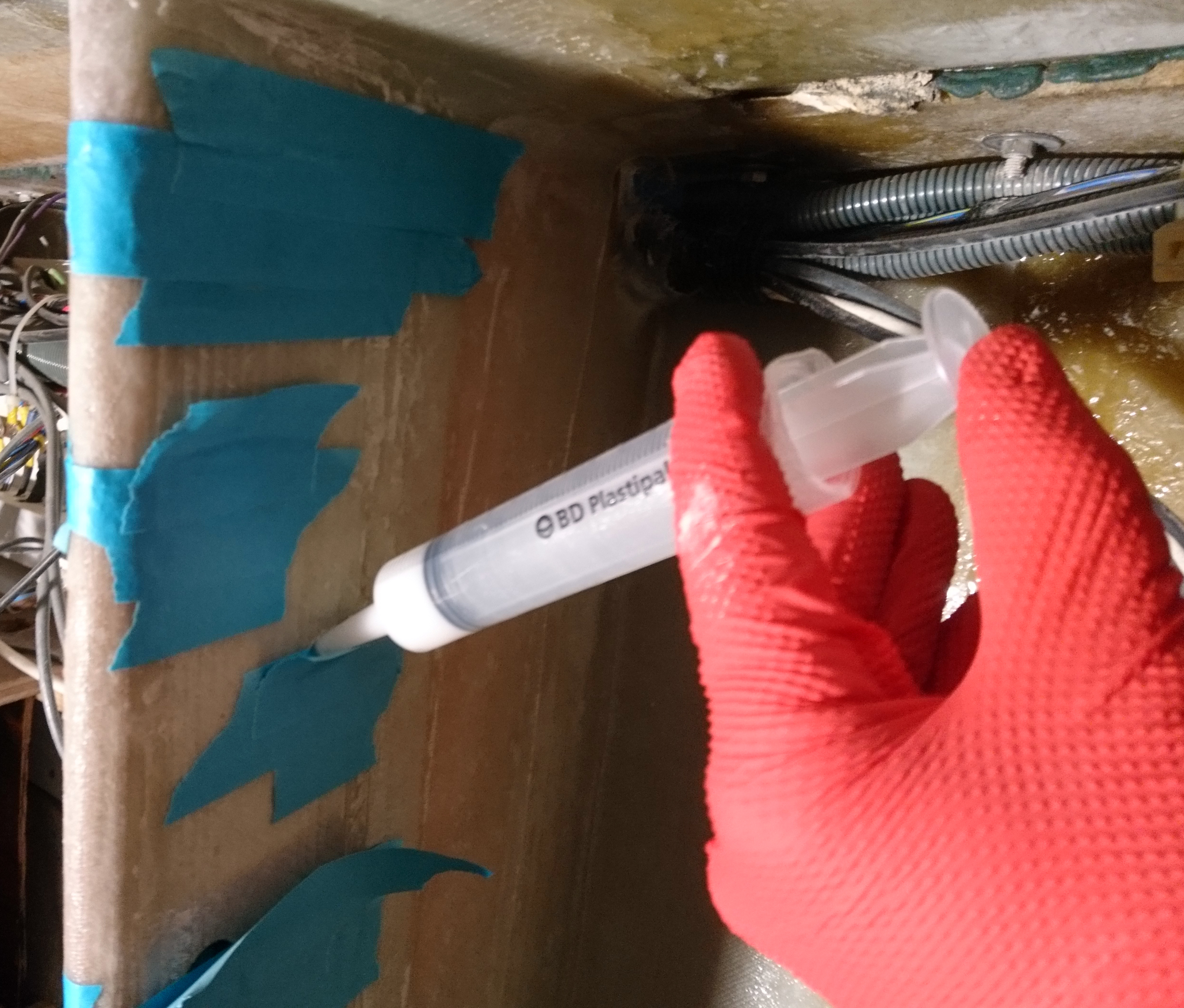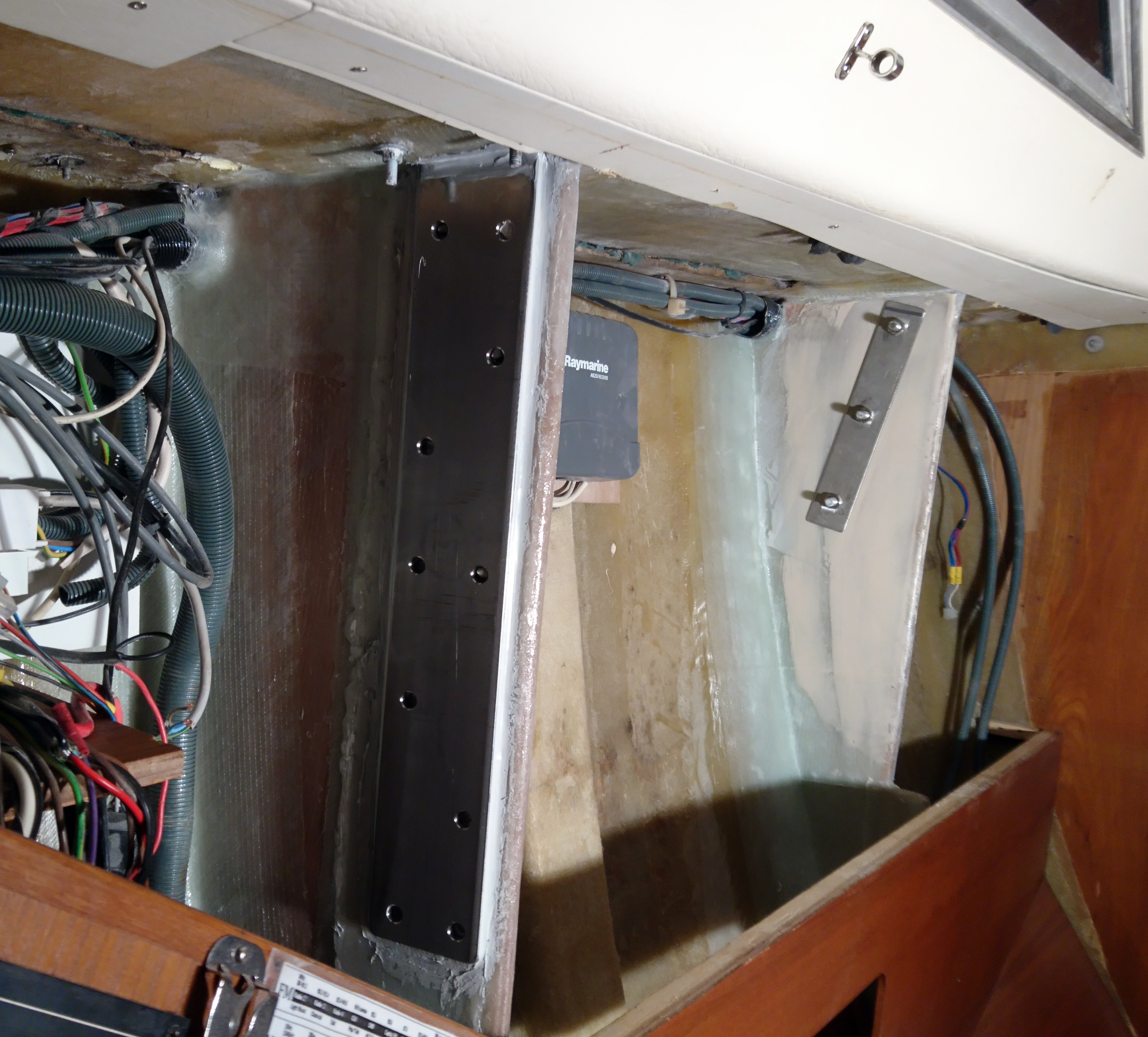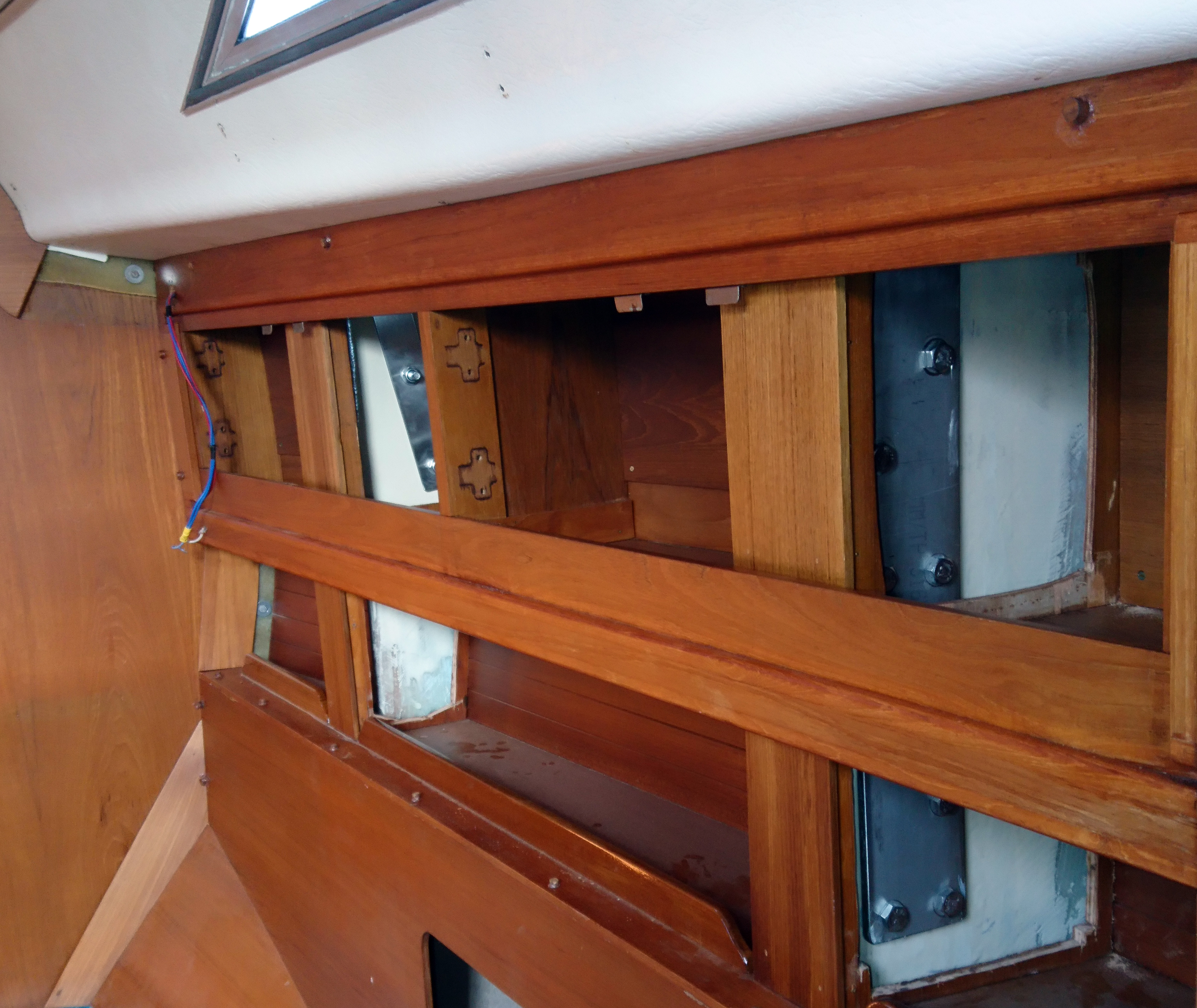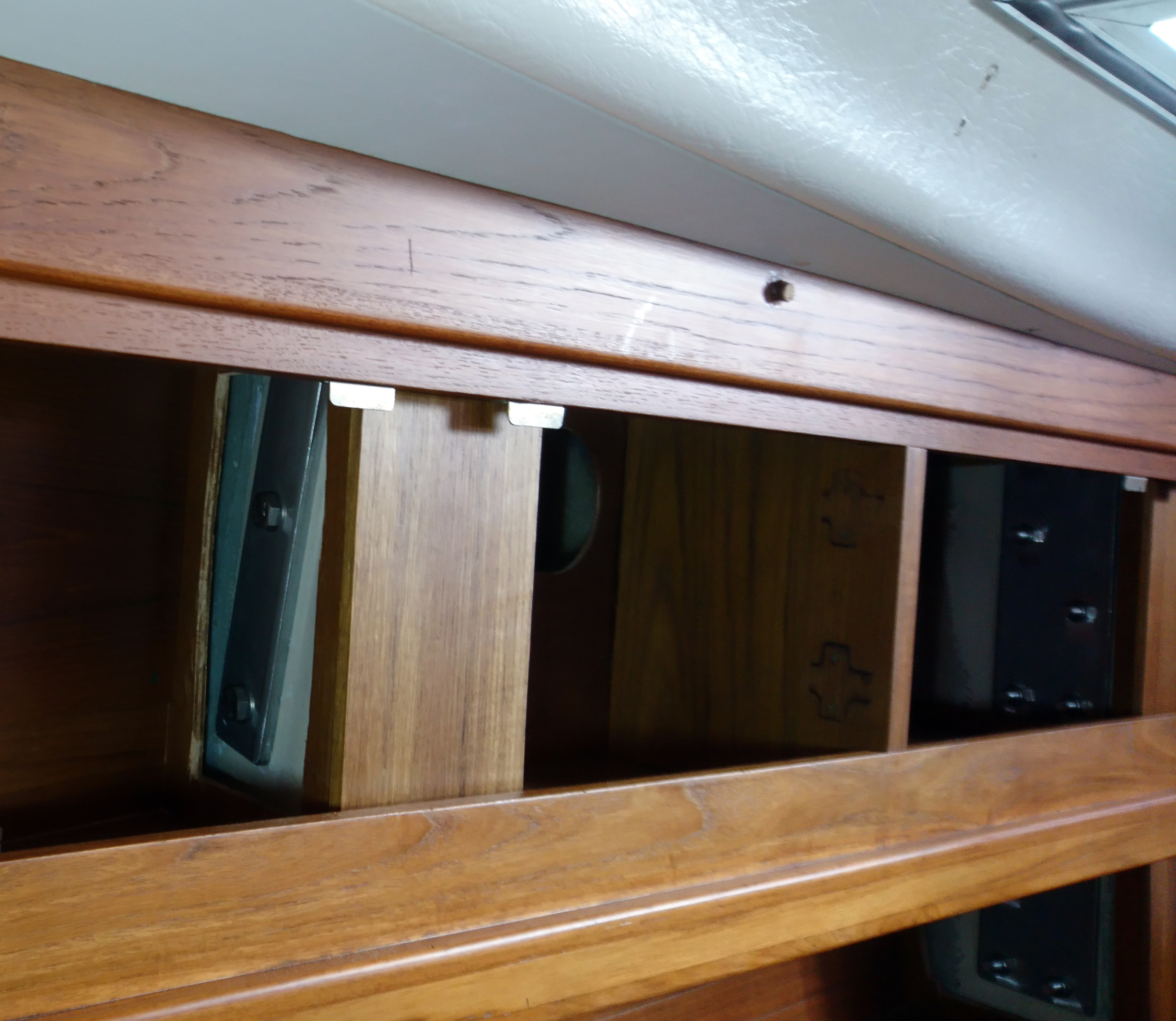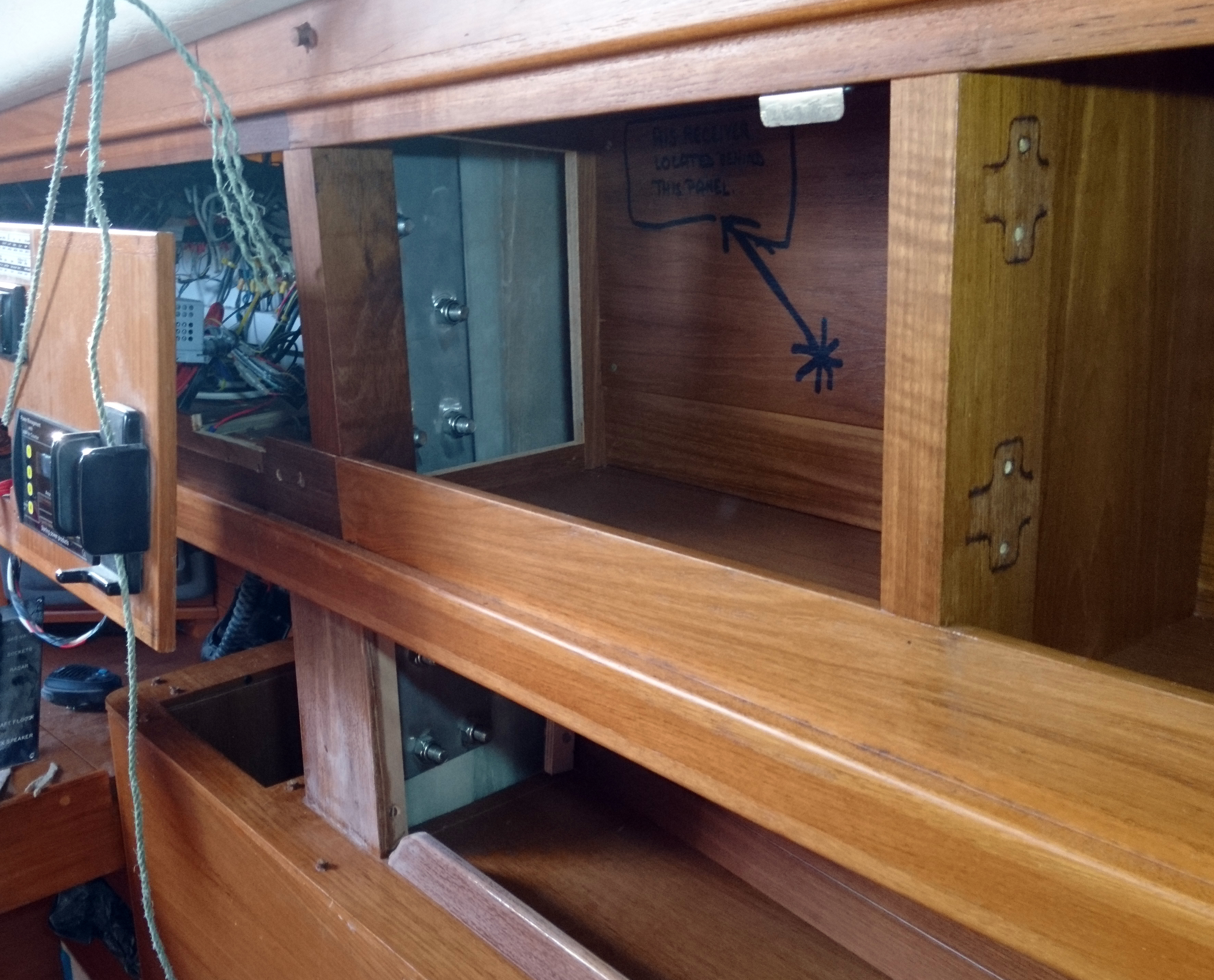Holding tank
Based at Southwold on the East Coast we generally have two choices when we leave the harbour.
Turn right or head straight across. (us locals try and avoid turning left!)
Heading straight across means that in 12 to 14 hours we’ll be in Dutch or Belgian waters and among the myriad of required items we should have on board or fitted is a holding tank, especially if we want to visit the inland waterways.
The trouble is many of our boats produced in the 80’s and 90’s really didn’t take this into account so it can be quite difficult to work out where to put an additional 100+ litre tank.
Most of the obvious places to fit a tank already have a tank so it means we have to get a bit creative.
Lucky for us Tek-Tanks allows us to be creative and will build a tank to fit some really weird shapes.
I’m sure there are other tank builders that can do this as well but I’ll let you into a yard secret. We go with what we know works for us. It’s always a risk going with another company as we rely so much on word of mouth that we cannot afford to fit something that fails, as it firstly reflects badly on us from the customers perspective, it will cost us money to fix which invariably will wipe out any margin we had built into the job and the delay will also affect the next jobs, with manpower, shed space availability etc
So when you find a system that works you stick with it.
Anyway an Oyster 406 came in for a new Beta engine, a new electric loo and a holding tank.
Whilst our engineering boys set about the “how do we get the old engine out?” issue, I got on with measuring the total cupboard space above and behind the fwd Heads and as long as the owners could find a new location for their tooth brushes and shampoo I believed I could get a 110 lt tank in there.
Yes it was a strange shape but nothing out of the ordinary for Tek-Tanks who whilst not very cheap have come up trumps every time I’ve set them a challenge.
It would require a little bit of surgery to the boat interior and also some thought to ensure there is future access.
Original builders/designers tend not to lose too much sleep over ensuring access to things that could need maintenance in the future, with quite large areas of boat that are simply inaccessible.
Being sailors and owners ourselves coupled with the frustration of getting to fittings, bolts, pipes, cables, not to mention areas of hull that you need to get access to in case some numpty t-bones you in a marina, we like to enable that whatever we put in, can be removed and attempt to provide access to previously no go areas.
We could have totally filled up the available space and found another 30 litres of tank space but access would have been made much harder to the top fittings such as the air filter/breather, flush out and level sender, so practicality won the day.
The heads molding is quite tight to the hull so the skin fittings are forward of the main bulkhead in the forward cabin.
Changing fittings including toilets will always result in redundant and unsightly holes so this dictated the location of the access hatch and this in turn finalised the position of the diverter valve.
The electric loo switches were mounted through 5mm white plastic sheet glued to the side of the sink cabinet, again covering a number of redundant holes.
We could have glassed and re gelcoated but the extra expense was viewed as being unnecessary.
The one issue I have with electric loos are they are so incredibly noisy and Jabsco even has the temerity to call it the quiet flush.
There should be a little flag raised when you use it in a marina saying “Yes we have a holding tank”.
That said it works well and based on the lack of complaints from customers they seem very reliable.
This is the first time I’ve used the Jabsco diverter valve and I’m hoping it proves reliable as fitting it was a breeze especially as the outlets are movable and allow many angles for the 38mm pipework.
On testing the loo and inlet pumps were more than adequate to discharge into the tank and with the diverter valve set to empty the tank level dropped like a stone.
An initial worry was about having 100kg of extra weight up high and out on one side but once the boat was on the water it made very little difference visually and of course, once offshore the tank could be emptied anyway.
The owners report back was very positive and apparently the noisy loo issue is not as bad as I feared as it takes such a short time to flush.
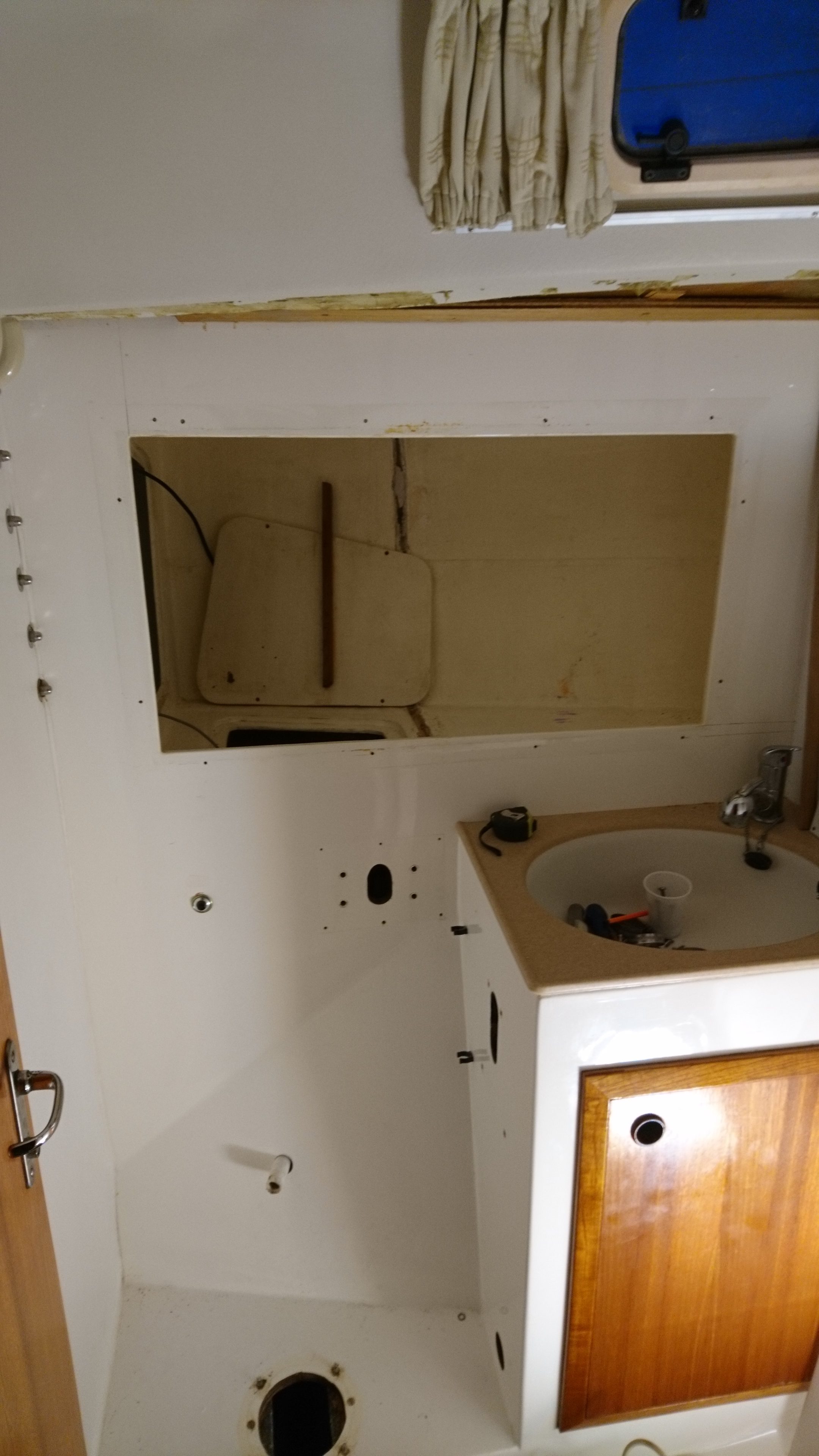
With the locker doors, a shelf and a dividing panel removed we found we could squeez a 100 liter tank inside.
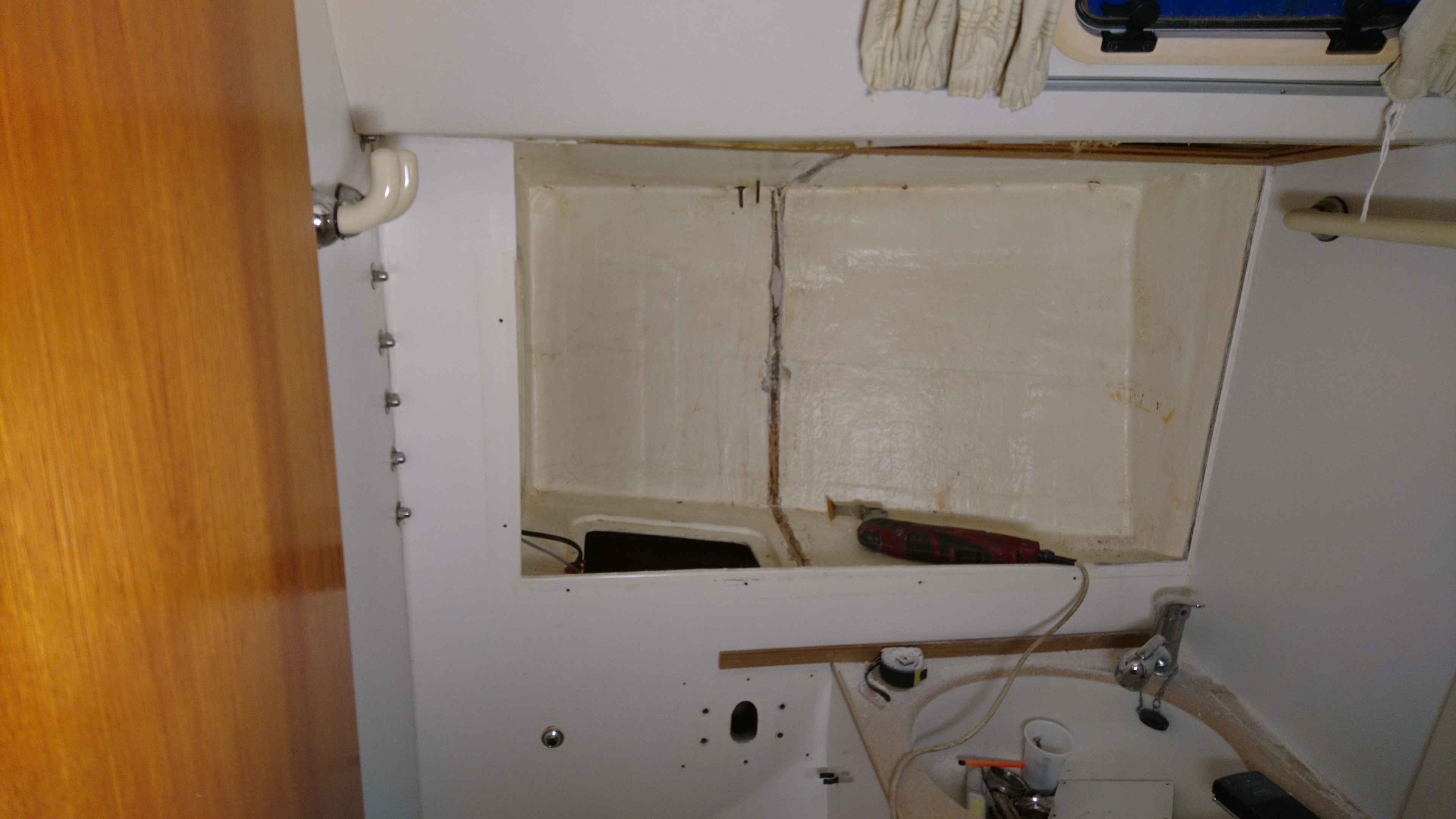
However to get it in we would have to cut away some of the fibreglass above and to one side of the locker.
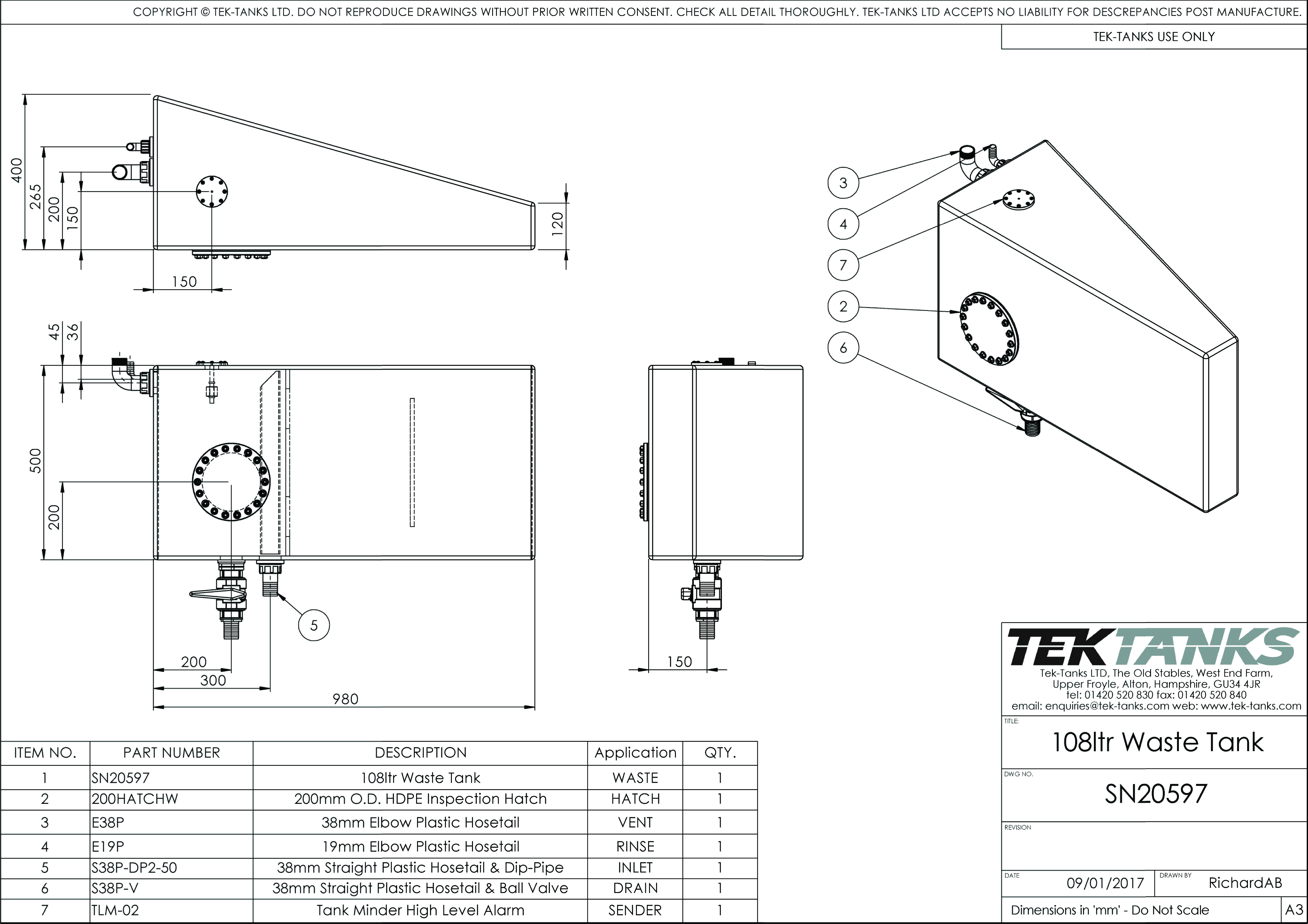
I sent Tek Tanks a rough drawing and they send me a proper one back for approval before manufacture.

A couple of weeks later we had a tank ready for a test fit, time to test whether I can measure odd shapes correctly.
Thankfully I did.
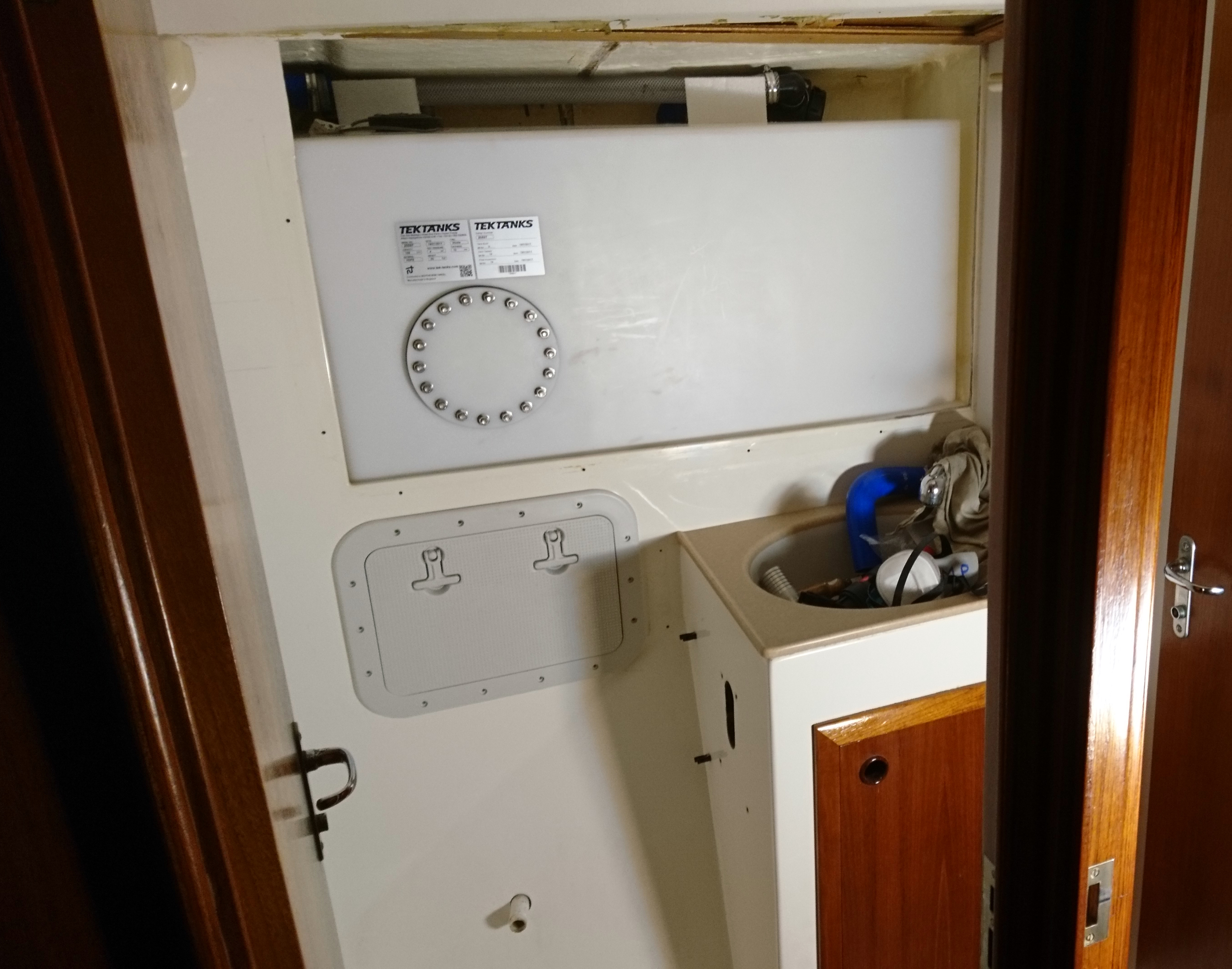
With the tank in place we ensured there was space above to allow a tank level sender unit and breather filter and allow access so that the carbon cartridge can be changed. The flush and pump out fittings and pipework are hidden behind the fibreglass panel on the left but can be reached over the op of the tank if needed.
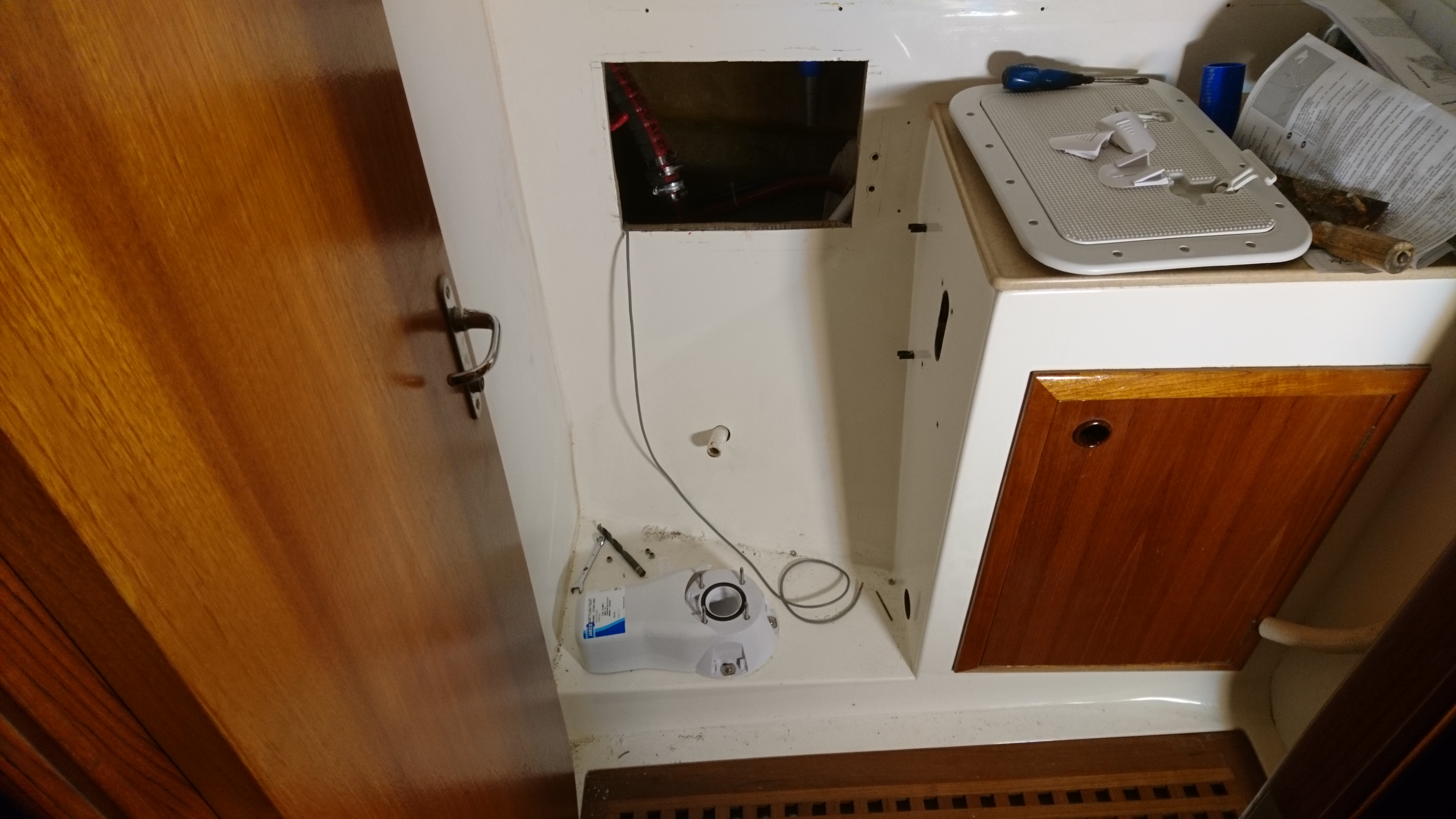
Below the tank we fitted a hatch cover to give access to the bottom of the tank and to the three way Jabsco diverter valve.
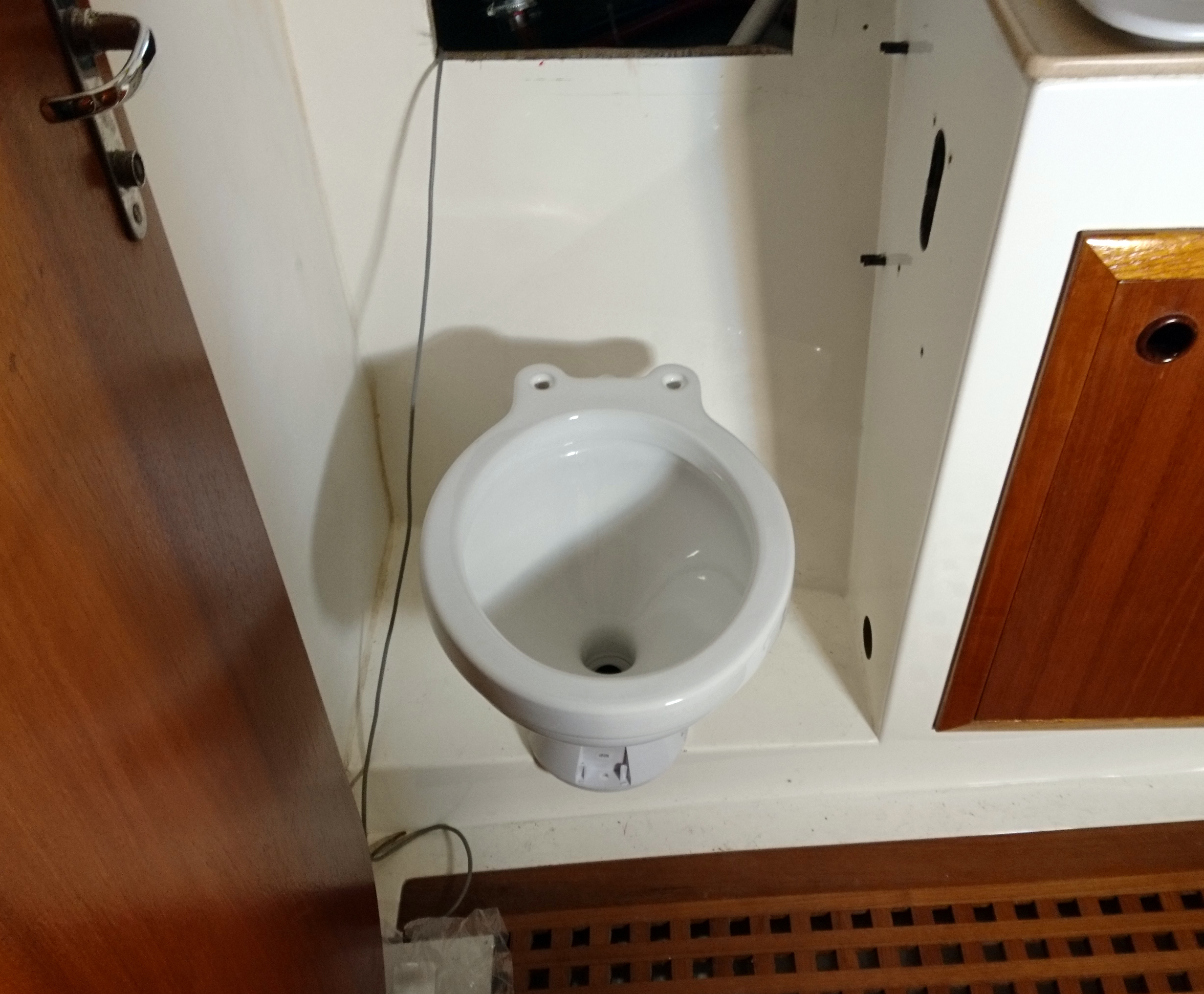
We also took the opportunity to fit a new electric loo.
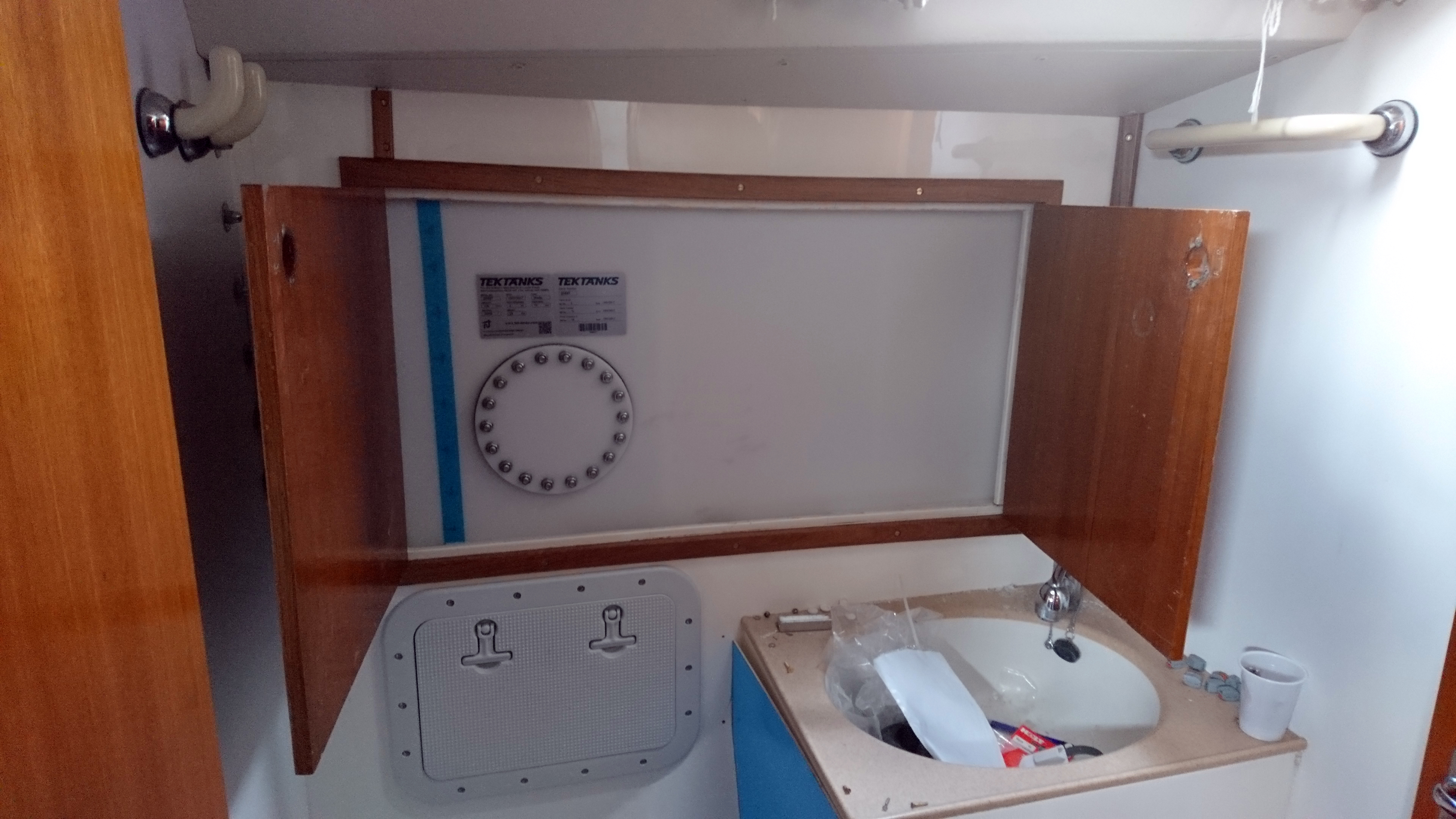
The trim and doors back on ensuring that everything can be dismantled to get full access to the tank in the future.
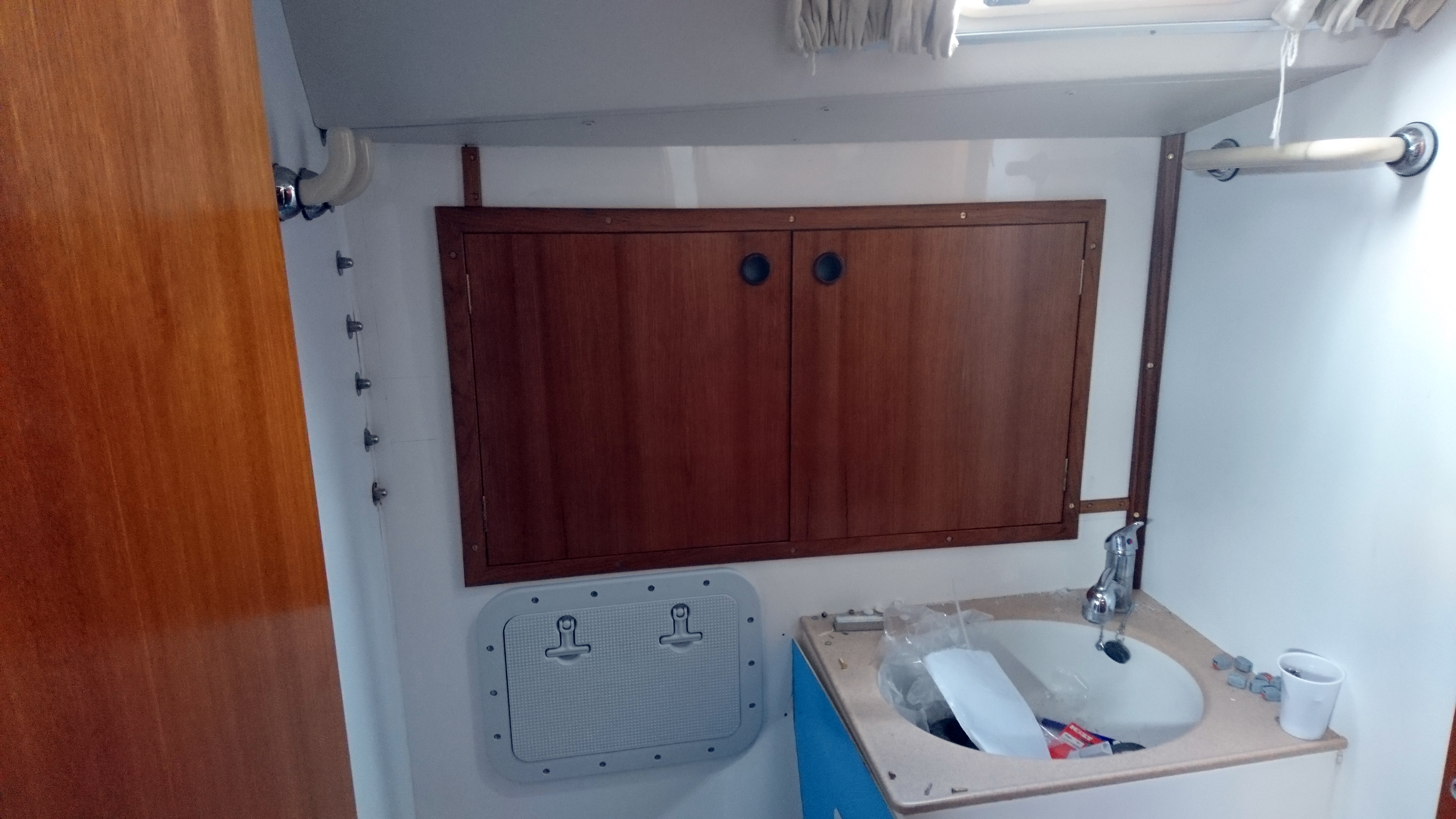
The owners will have to find a new place for their tooth brushes.
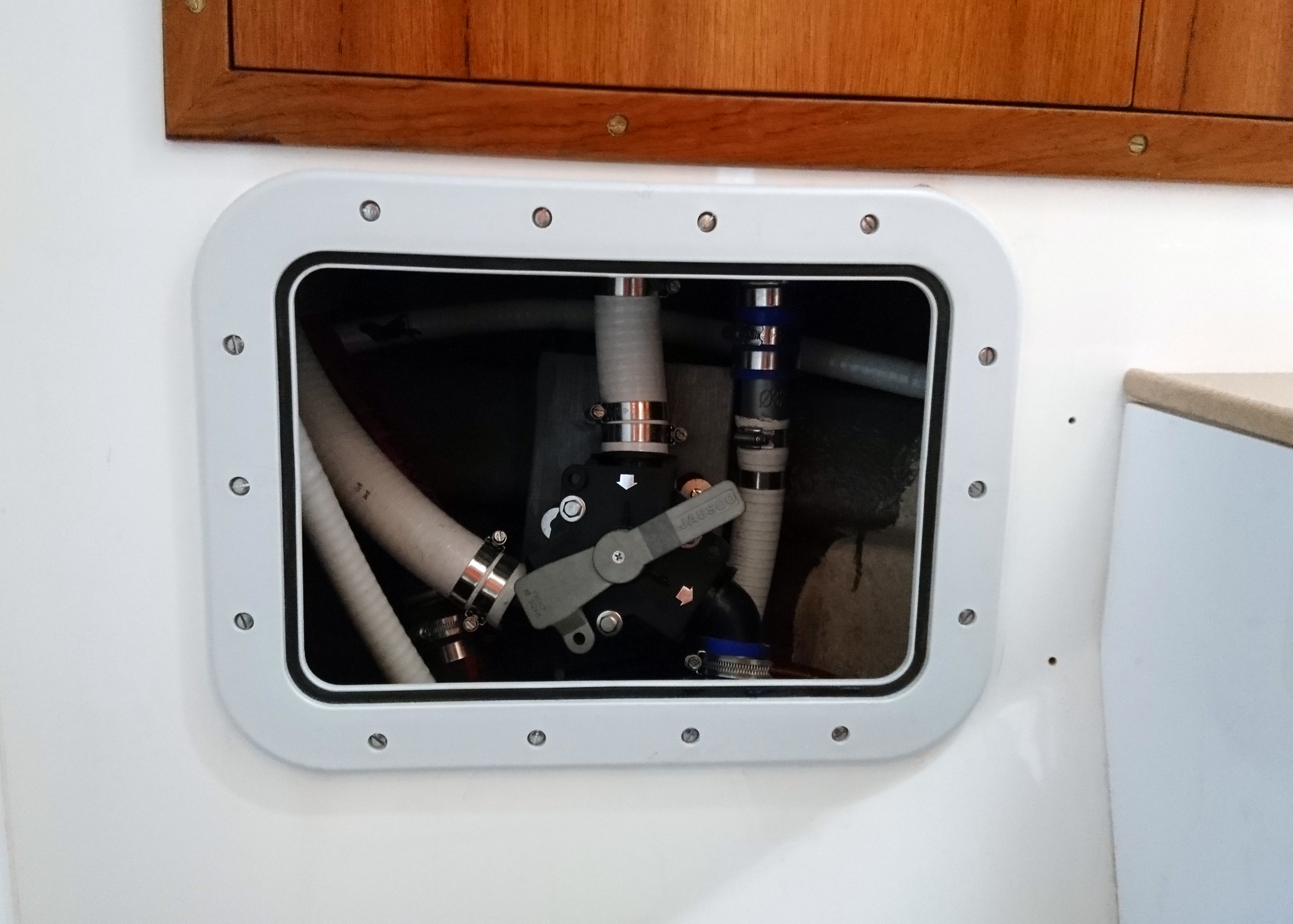
The hatch above the loo gives access to all the pipework and the excellent Jabsco three way valve which has clever adjustable hose fittings that accommodate irregular pipe angles.
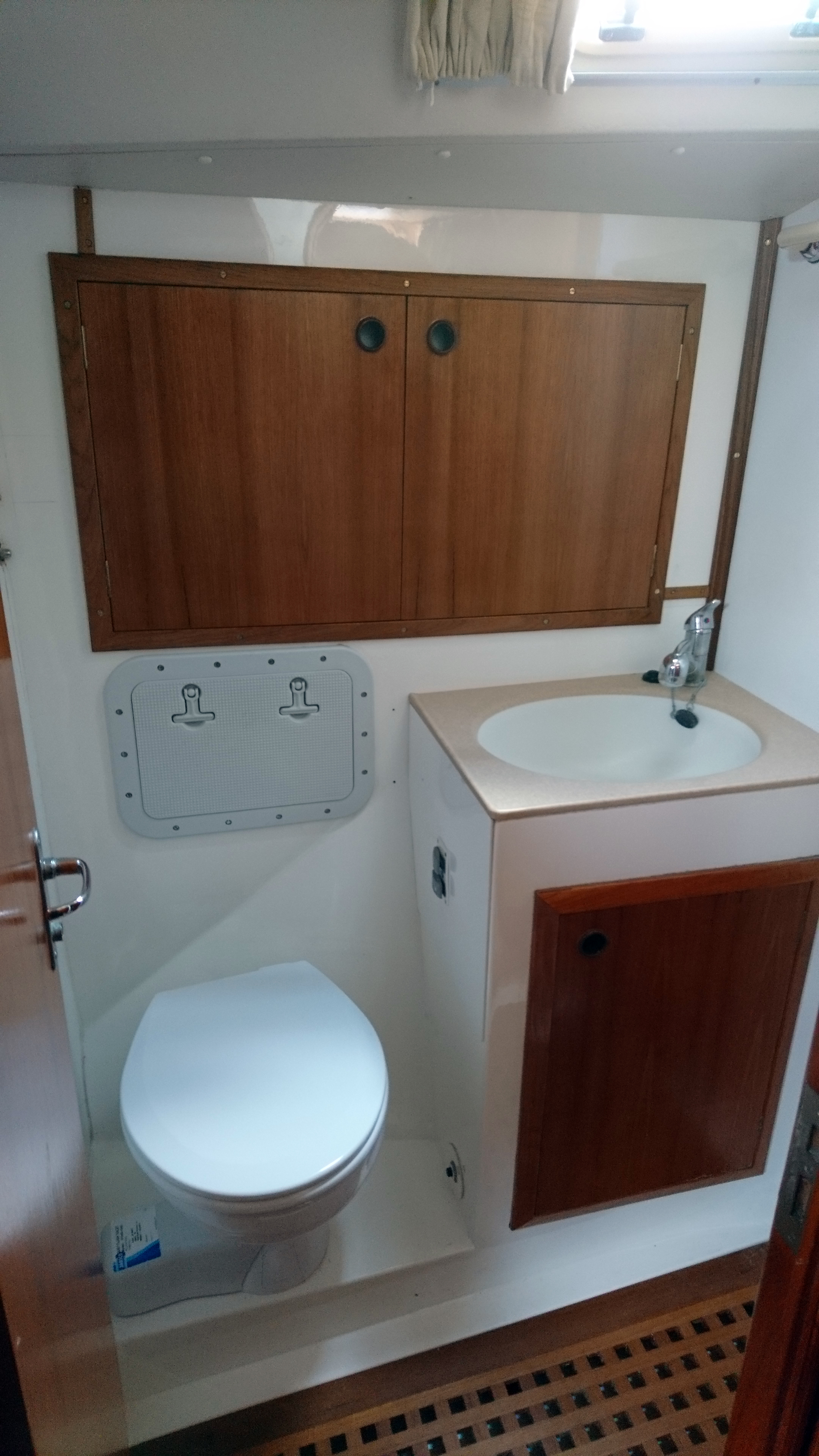
Apart from the extra little bits of trim and the viable fasteners to enable easy access the look of the heads is largely the same as before.
